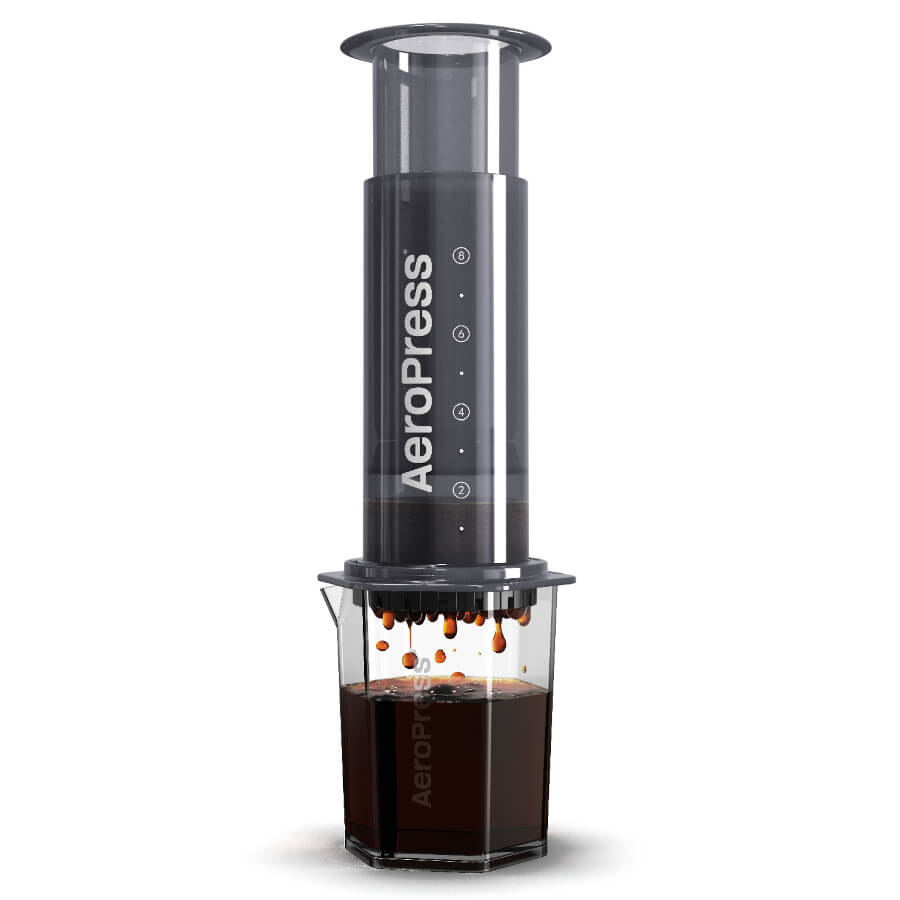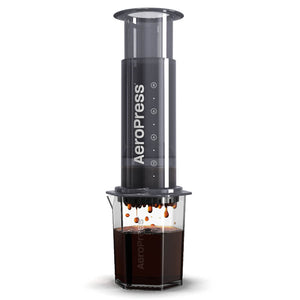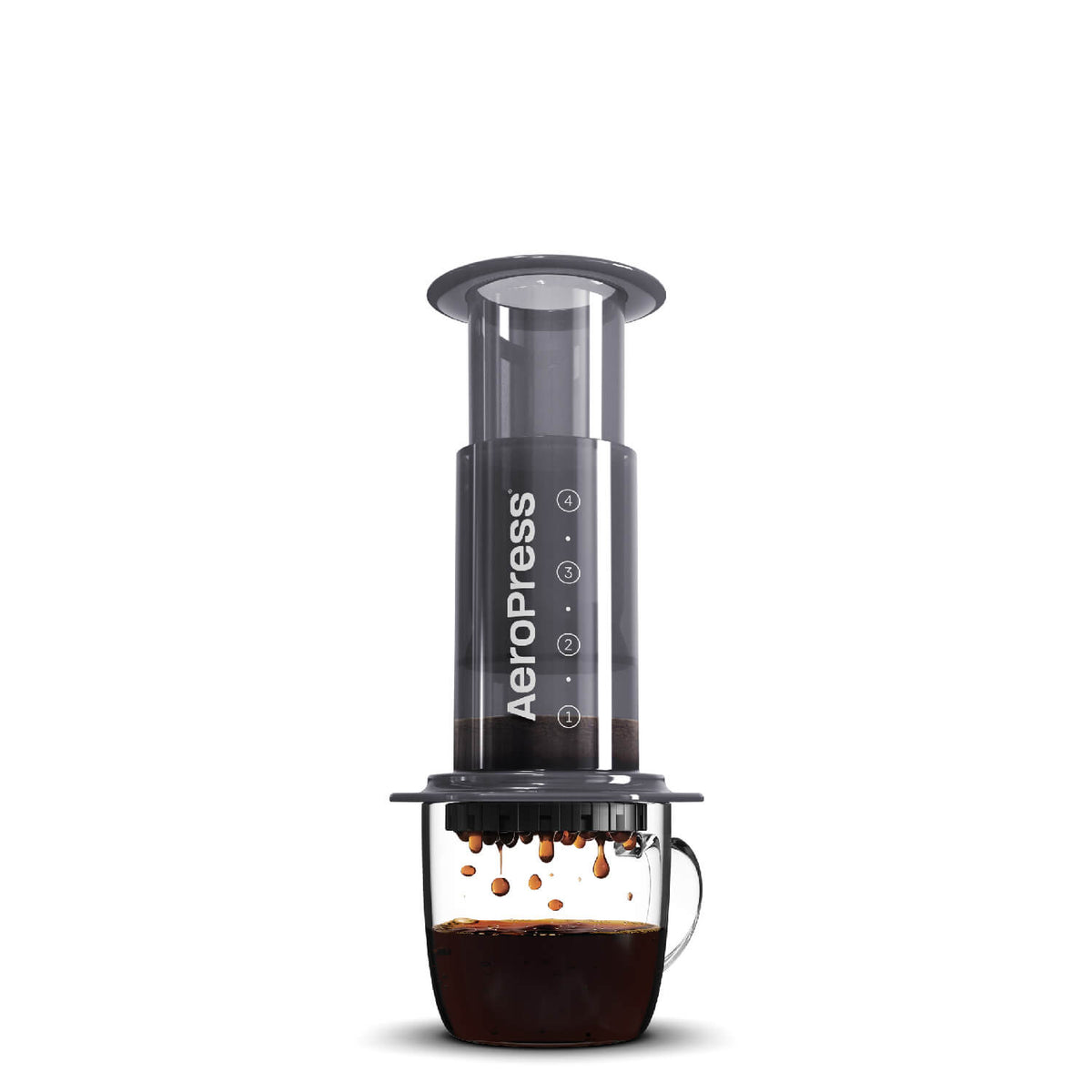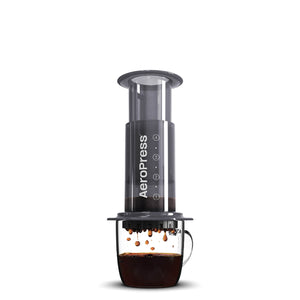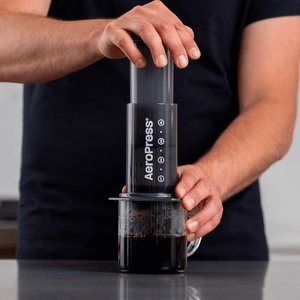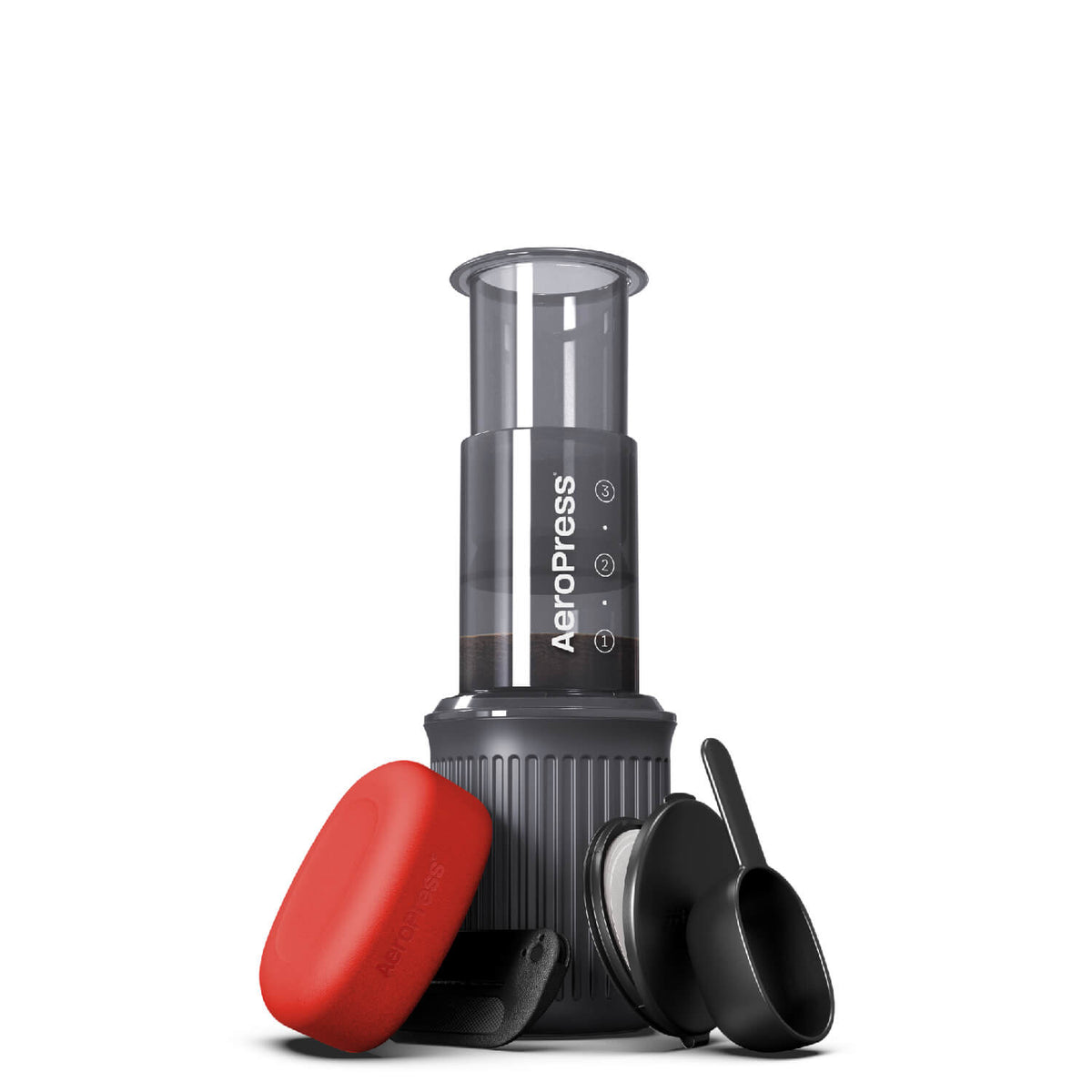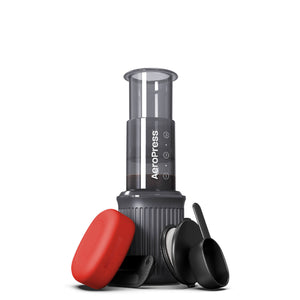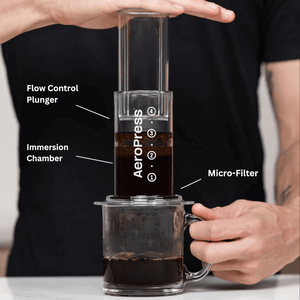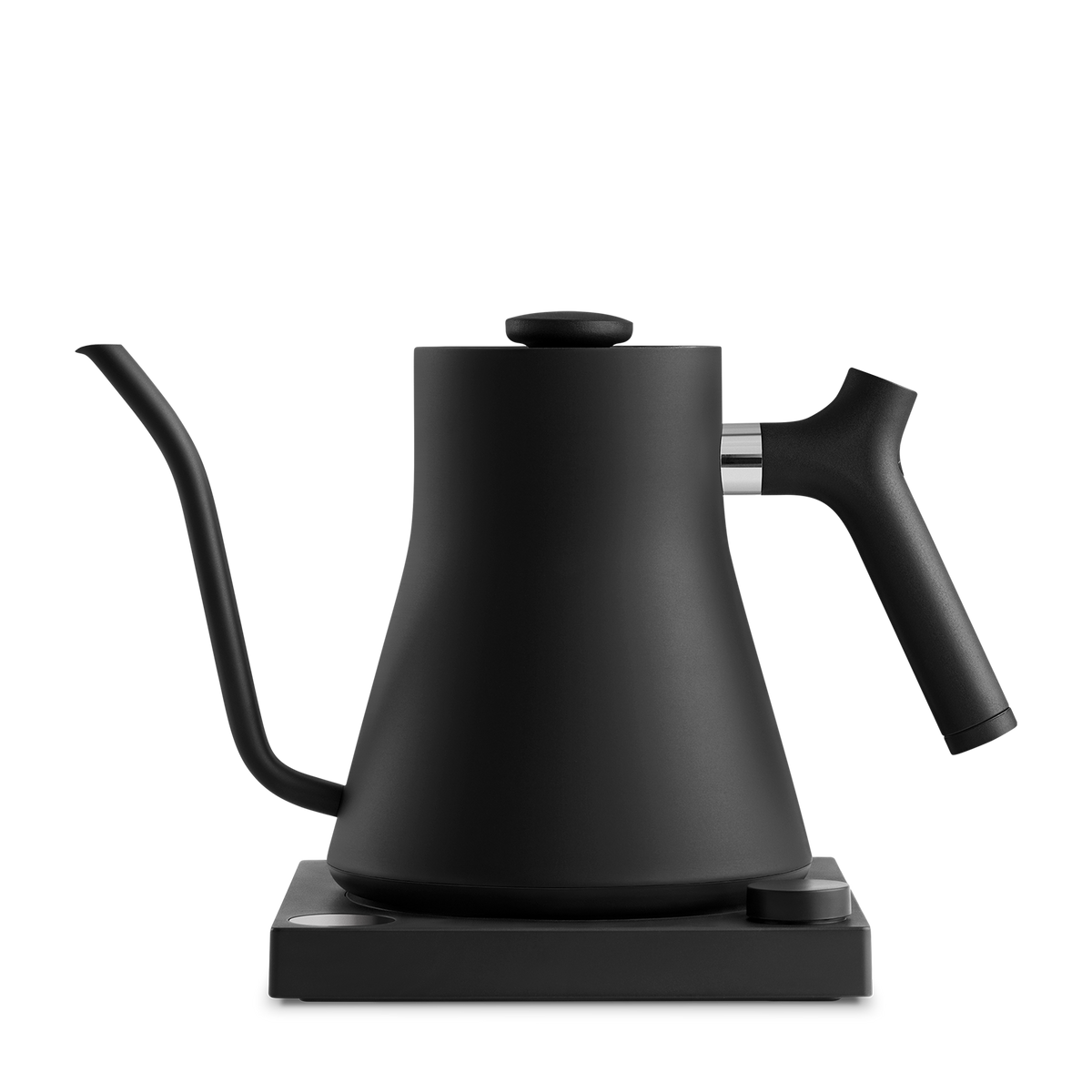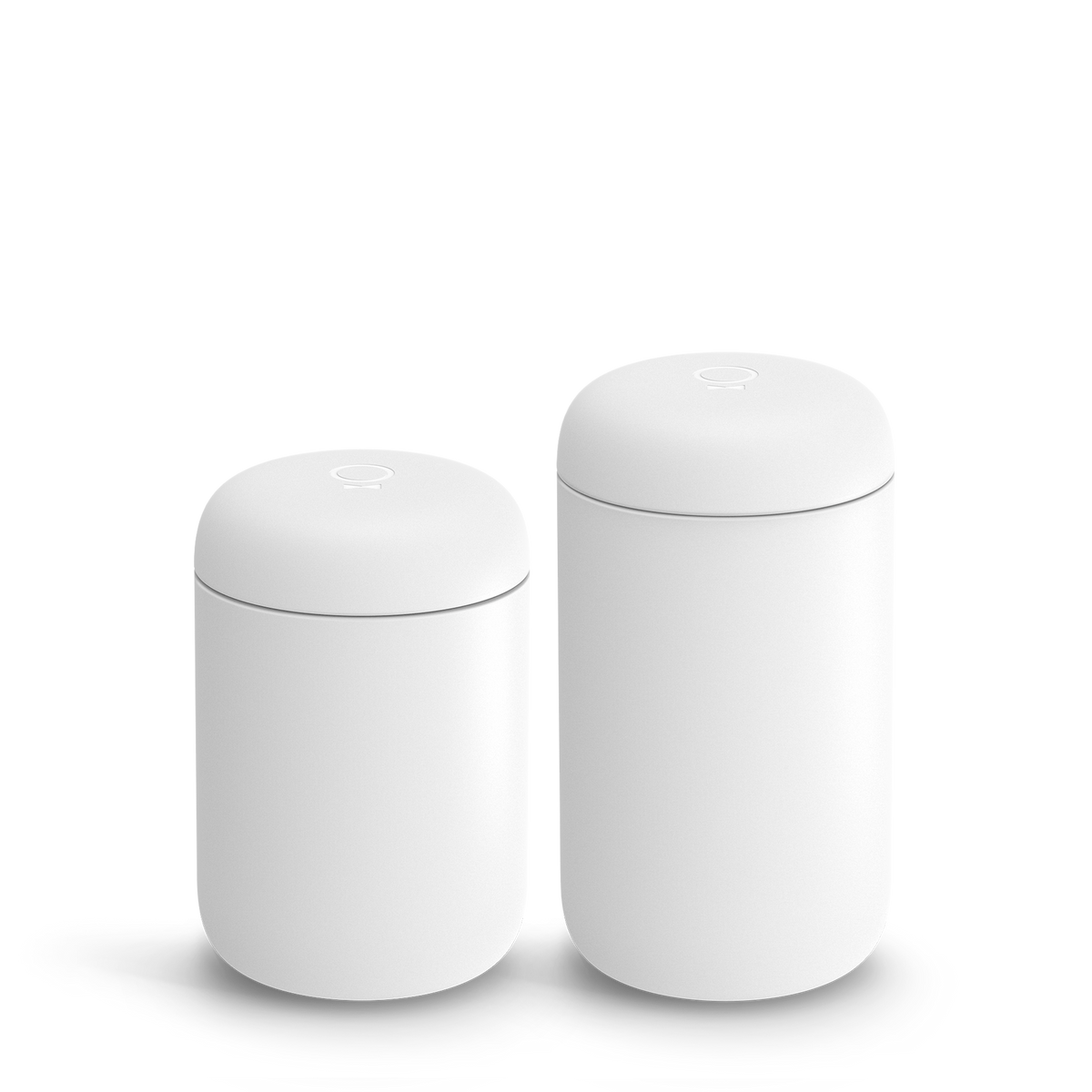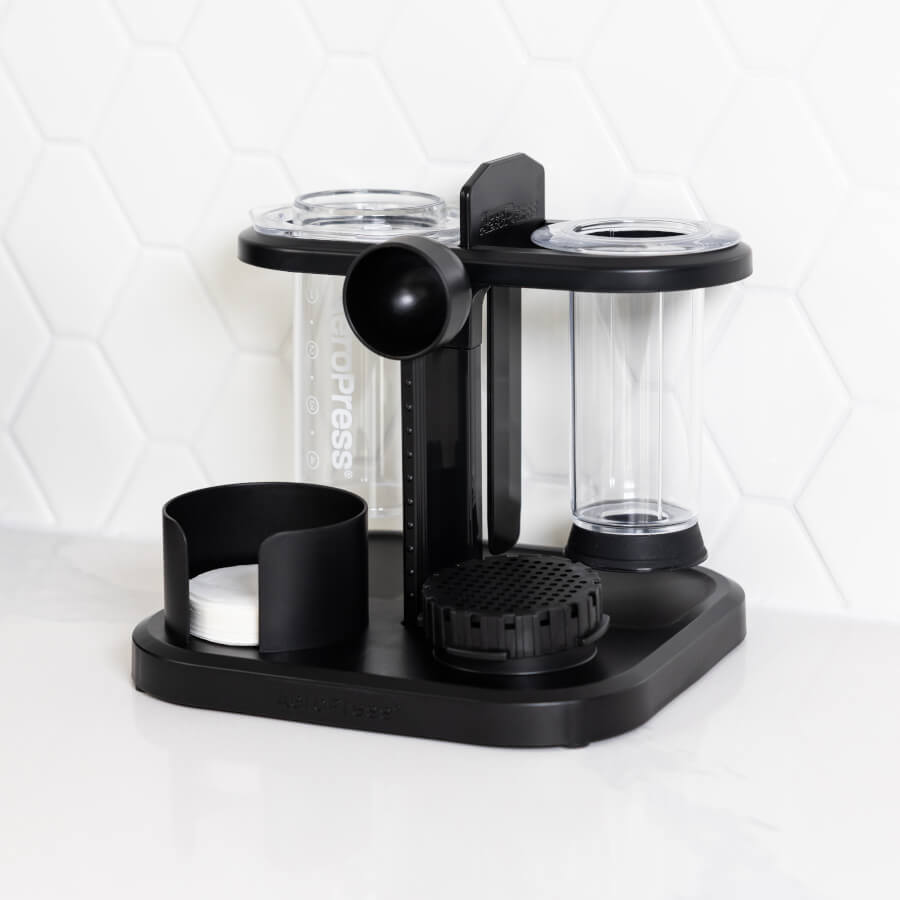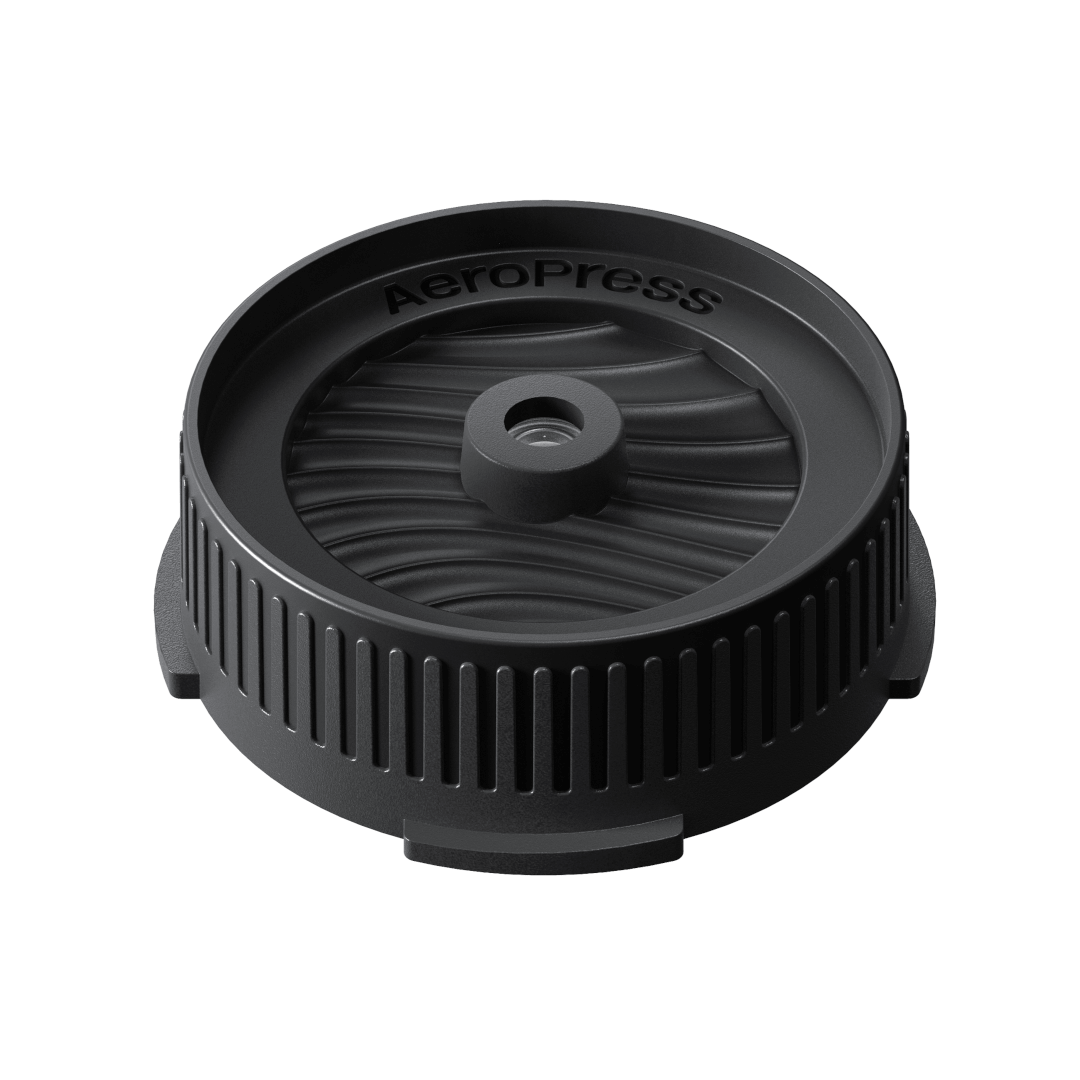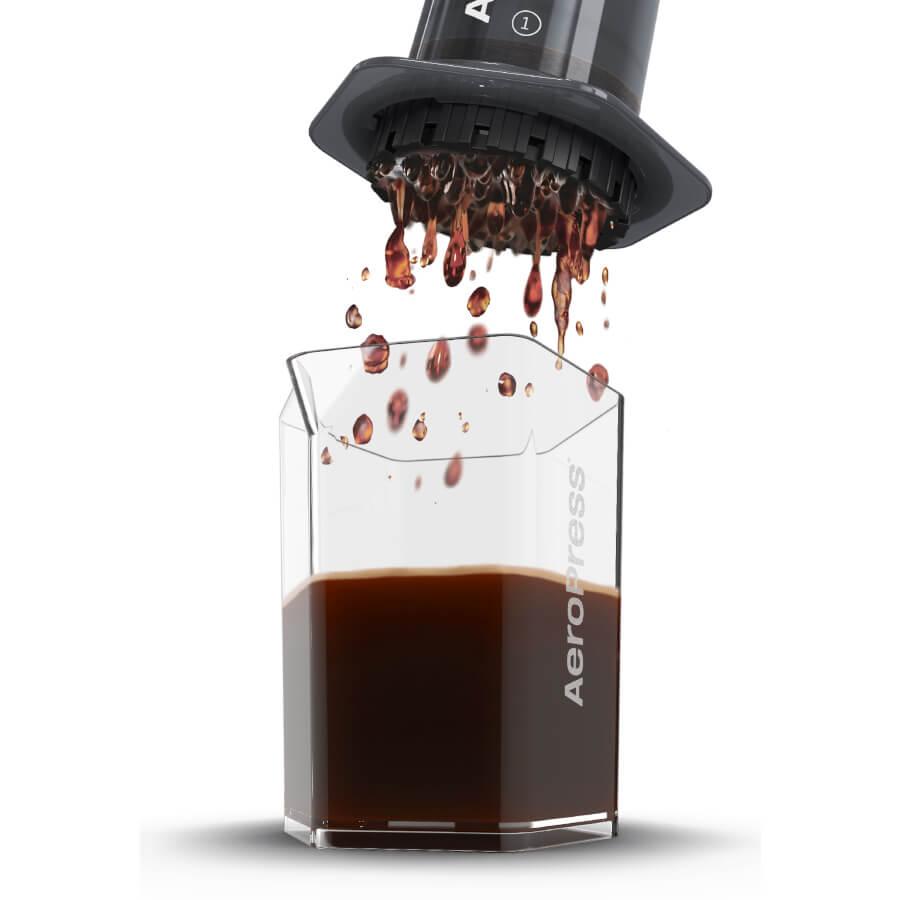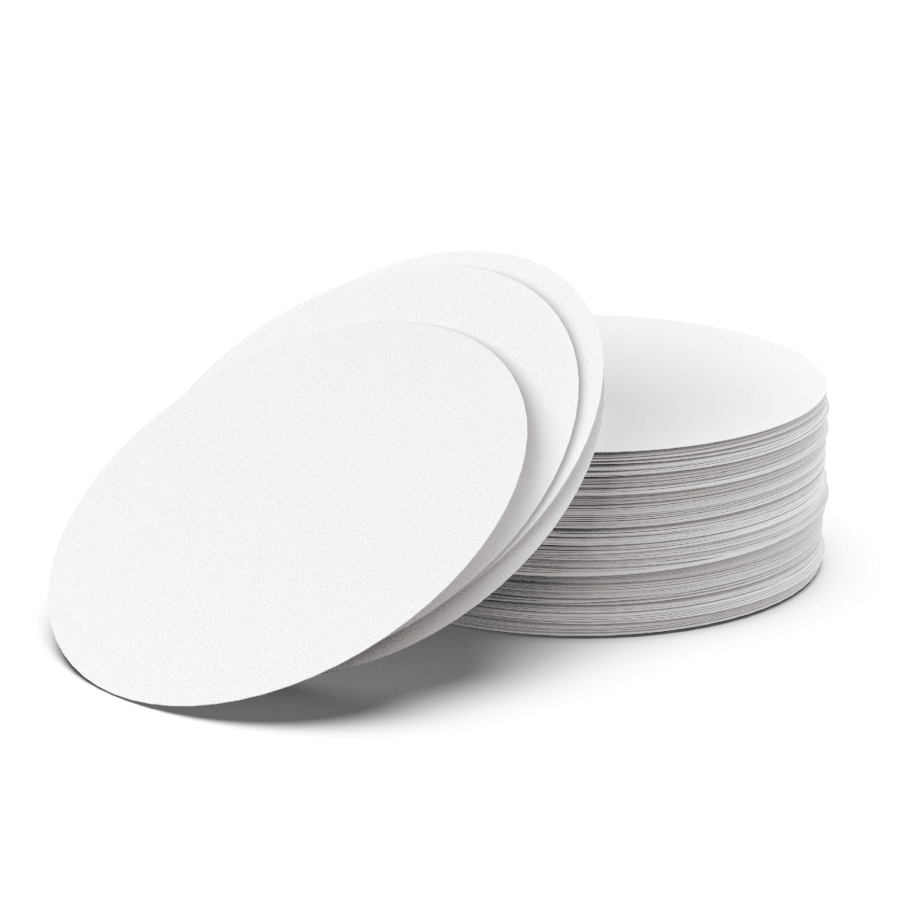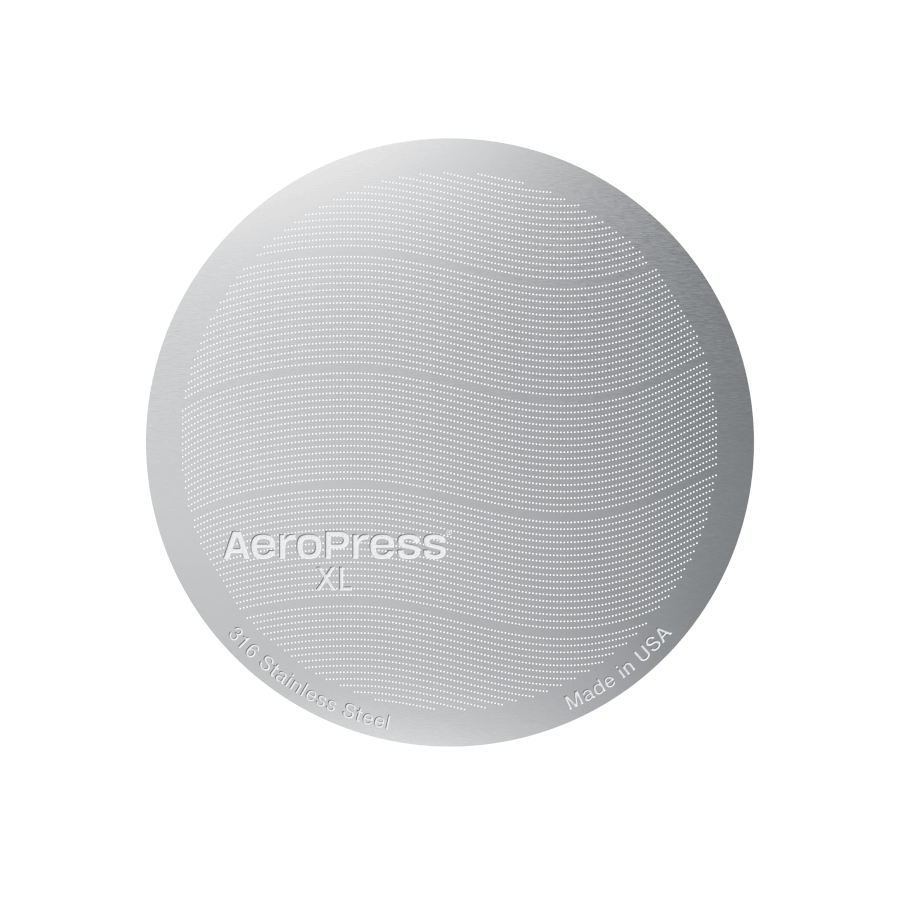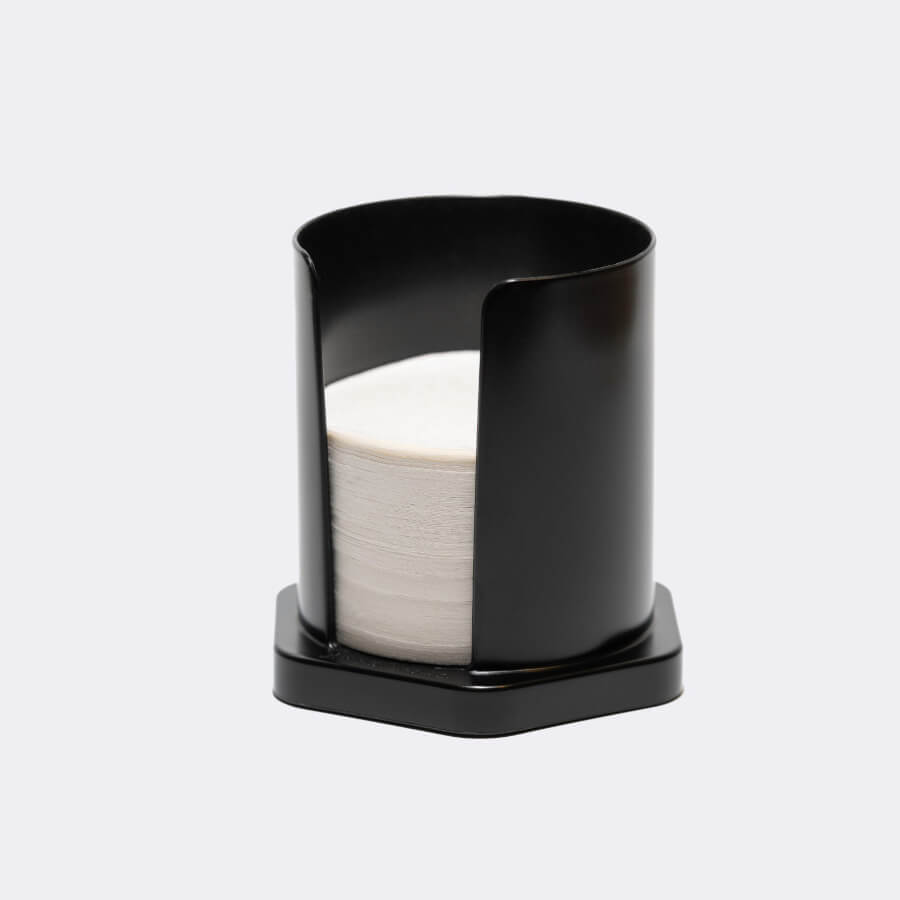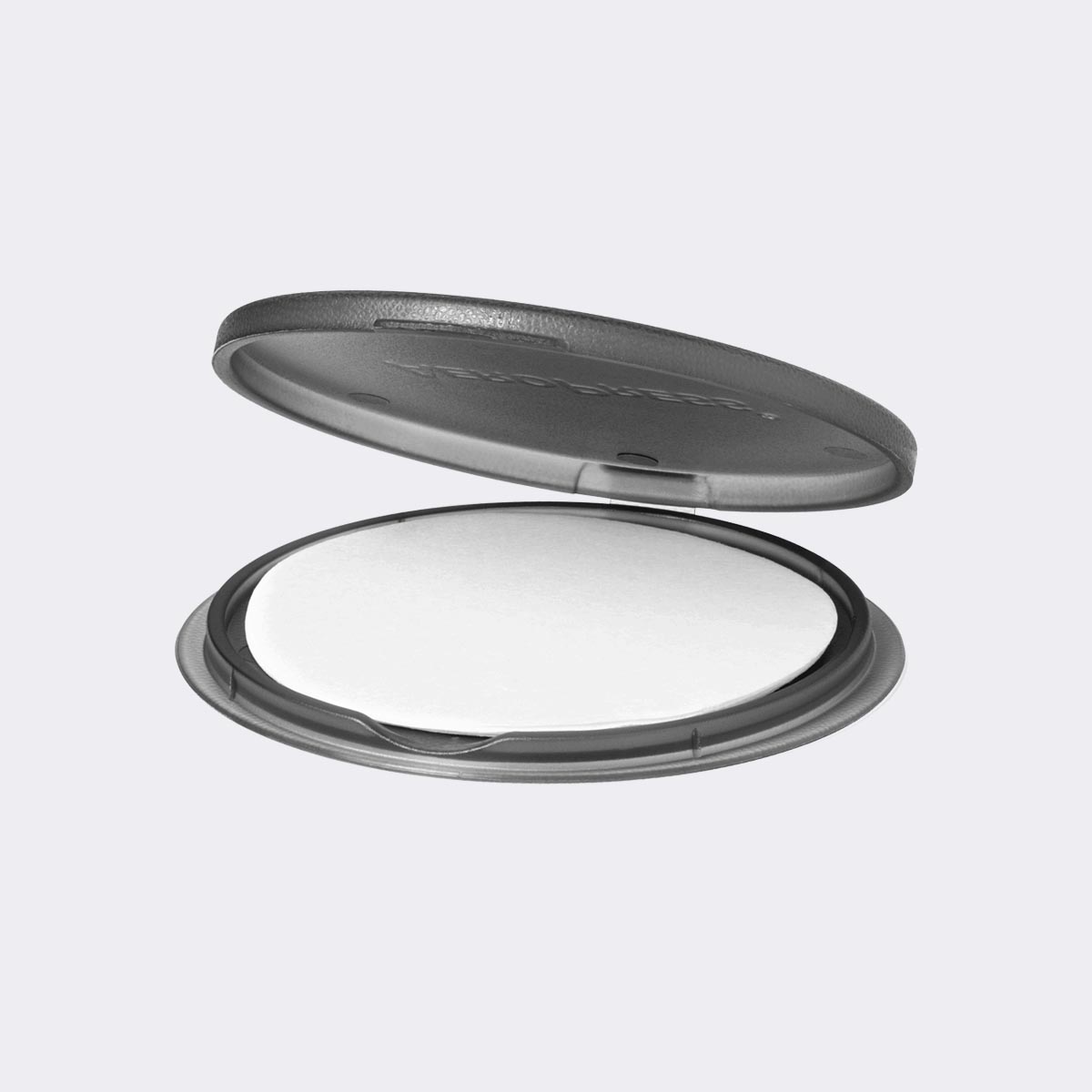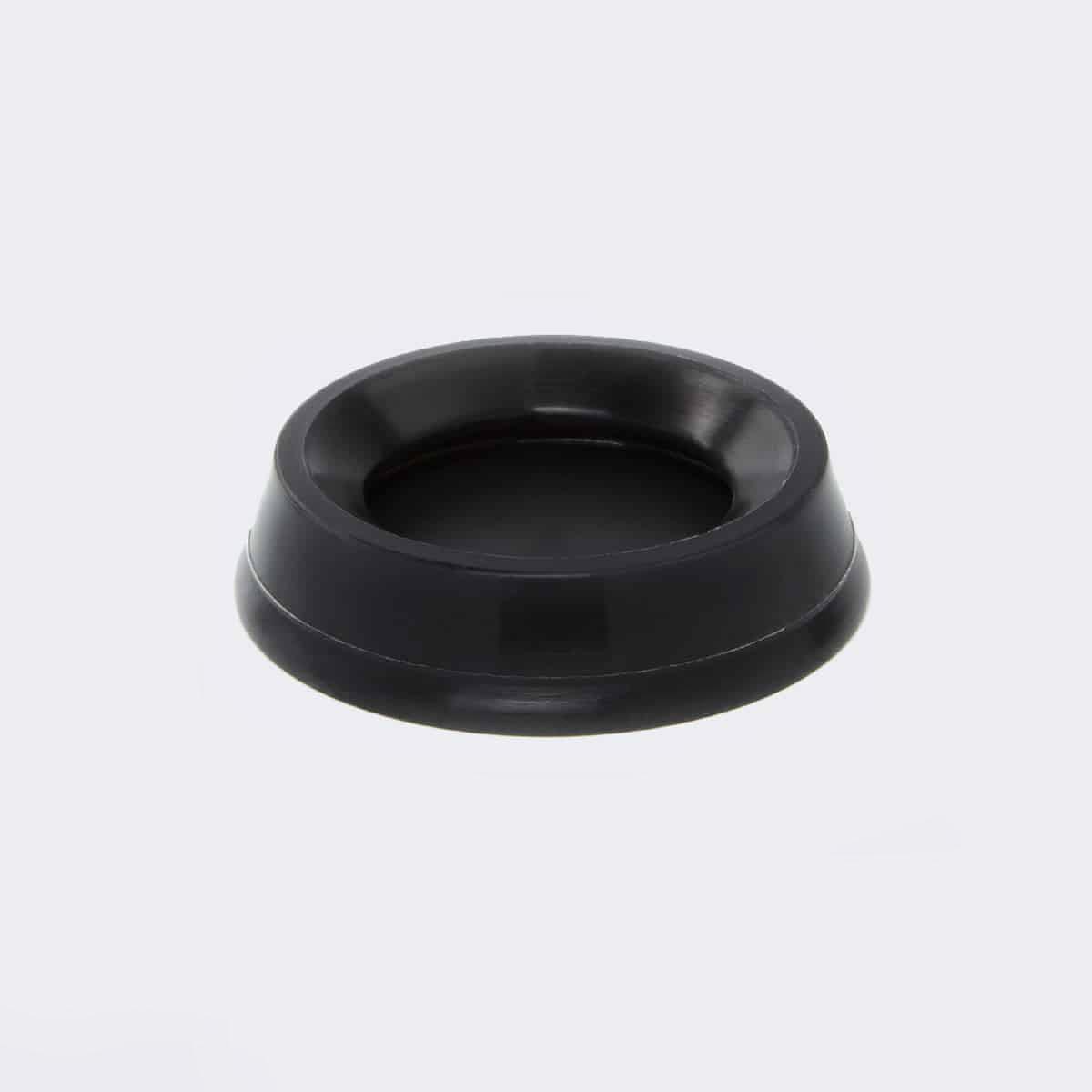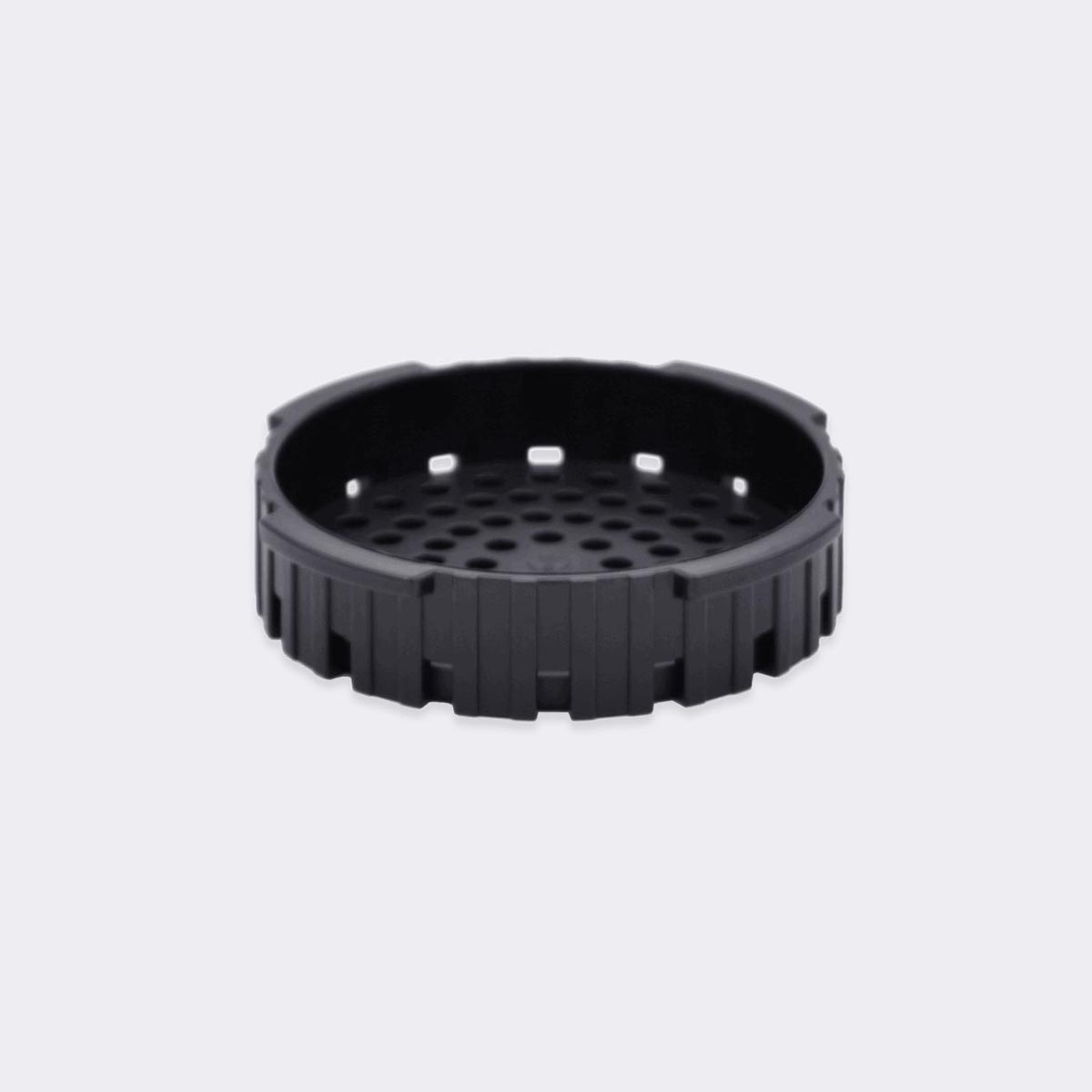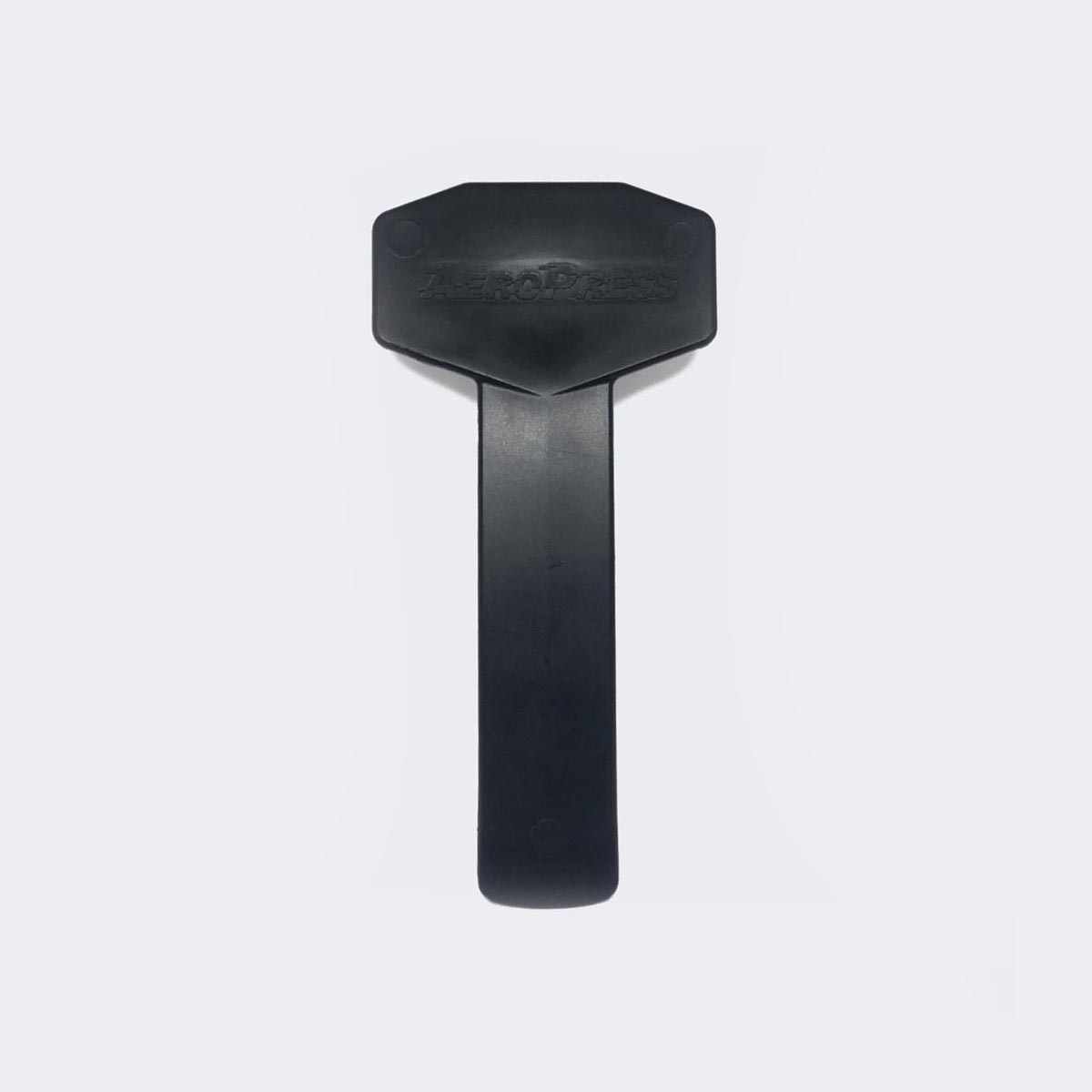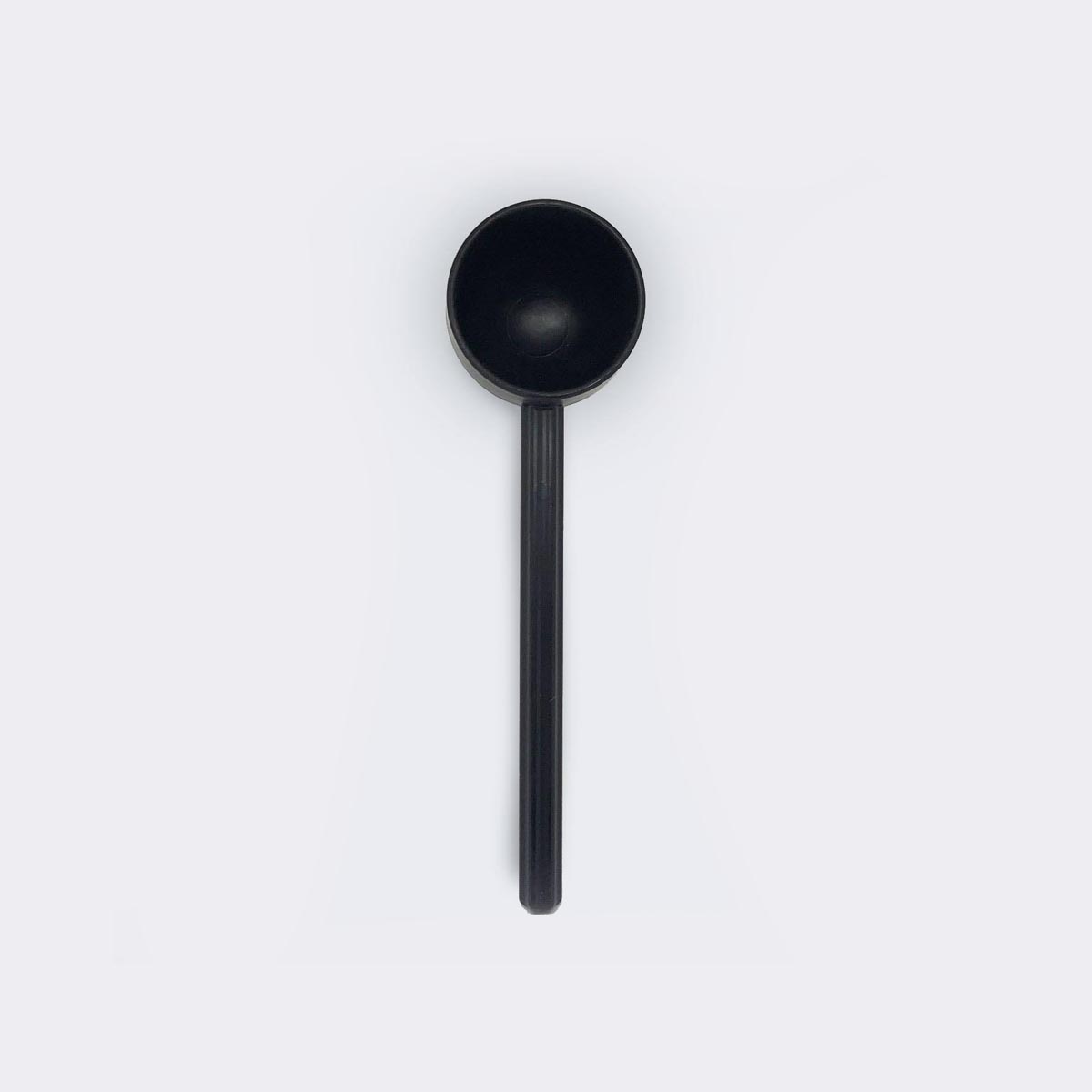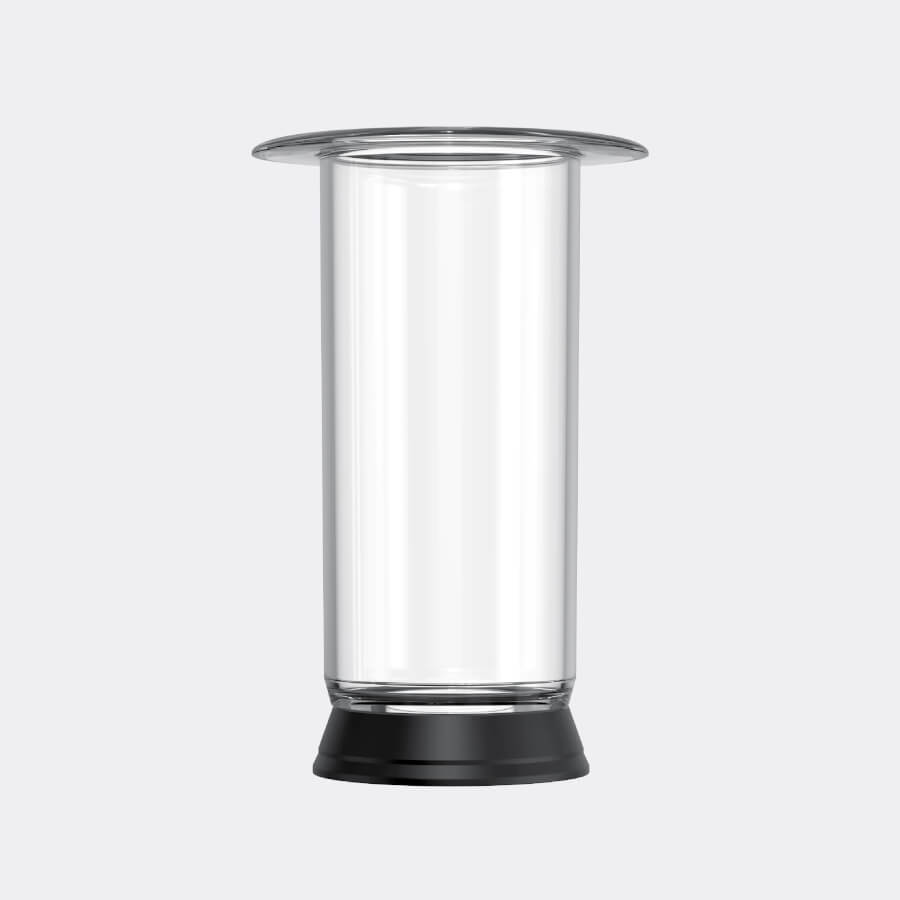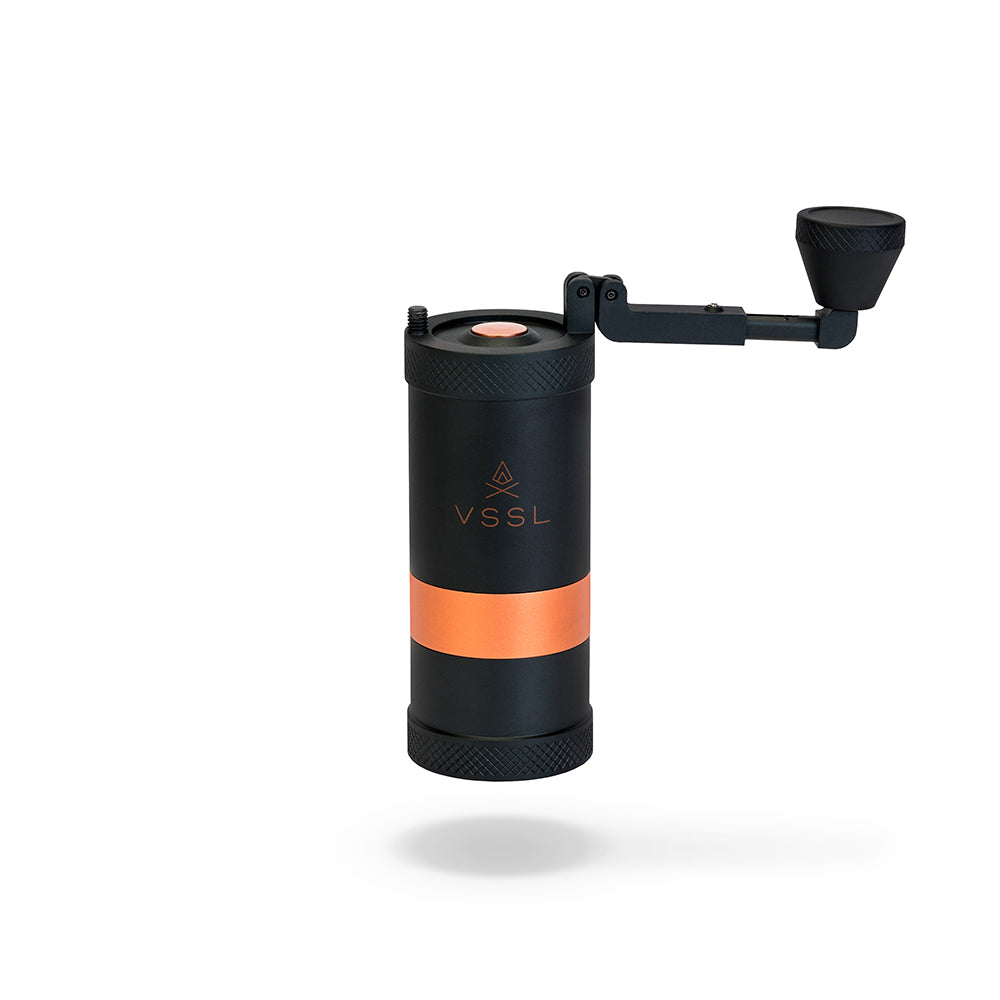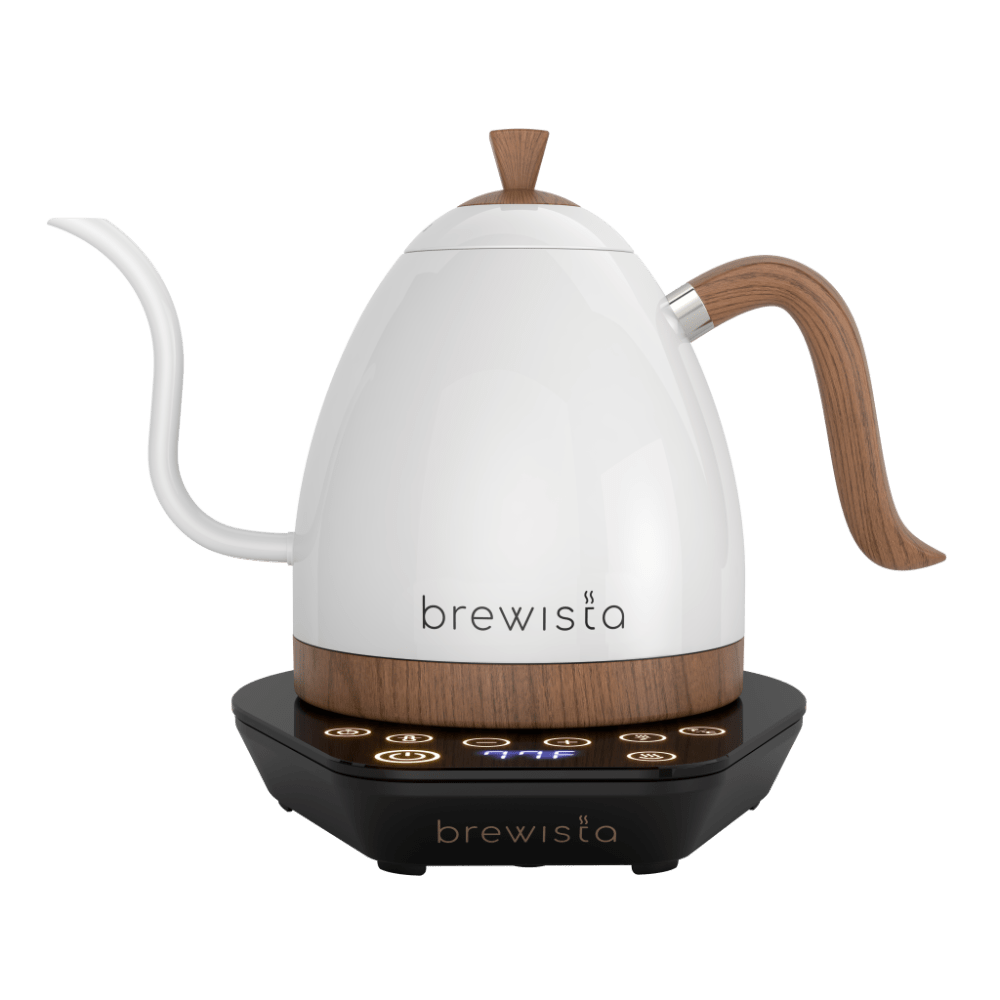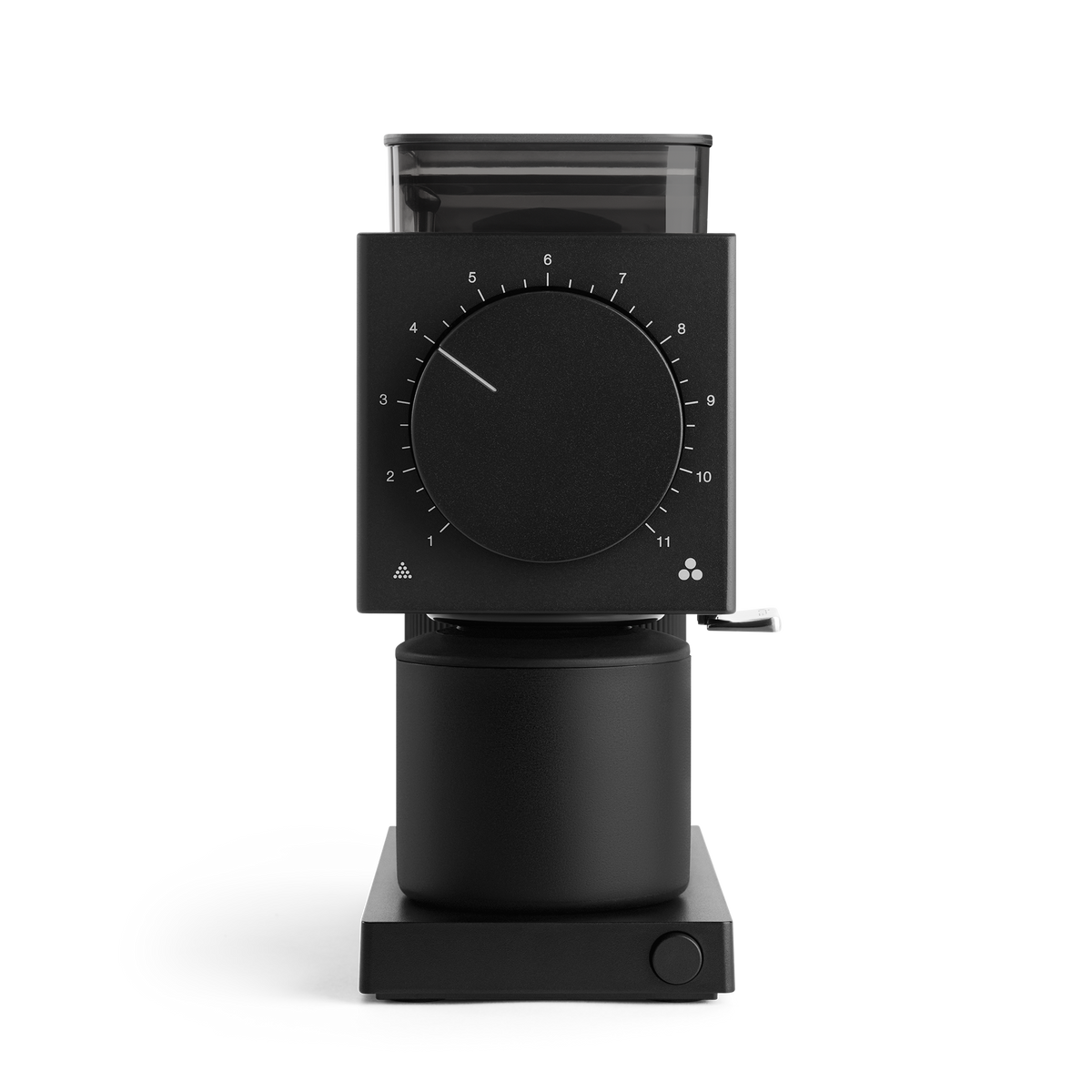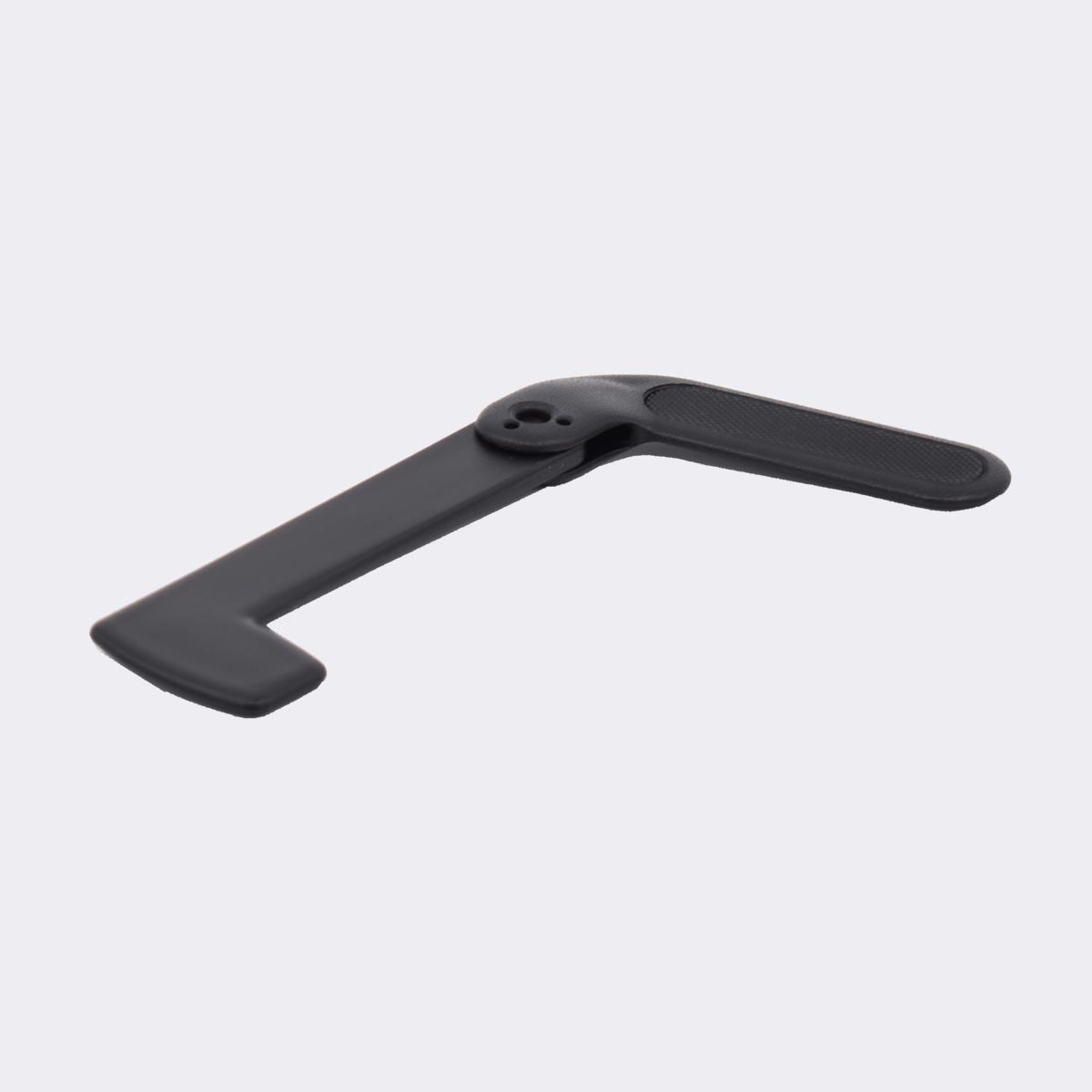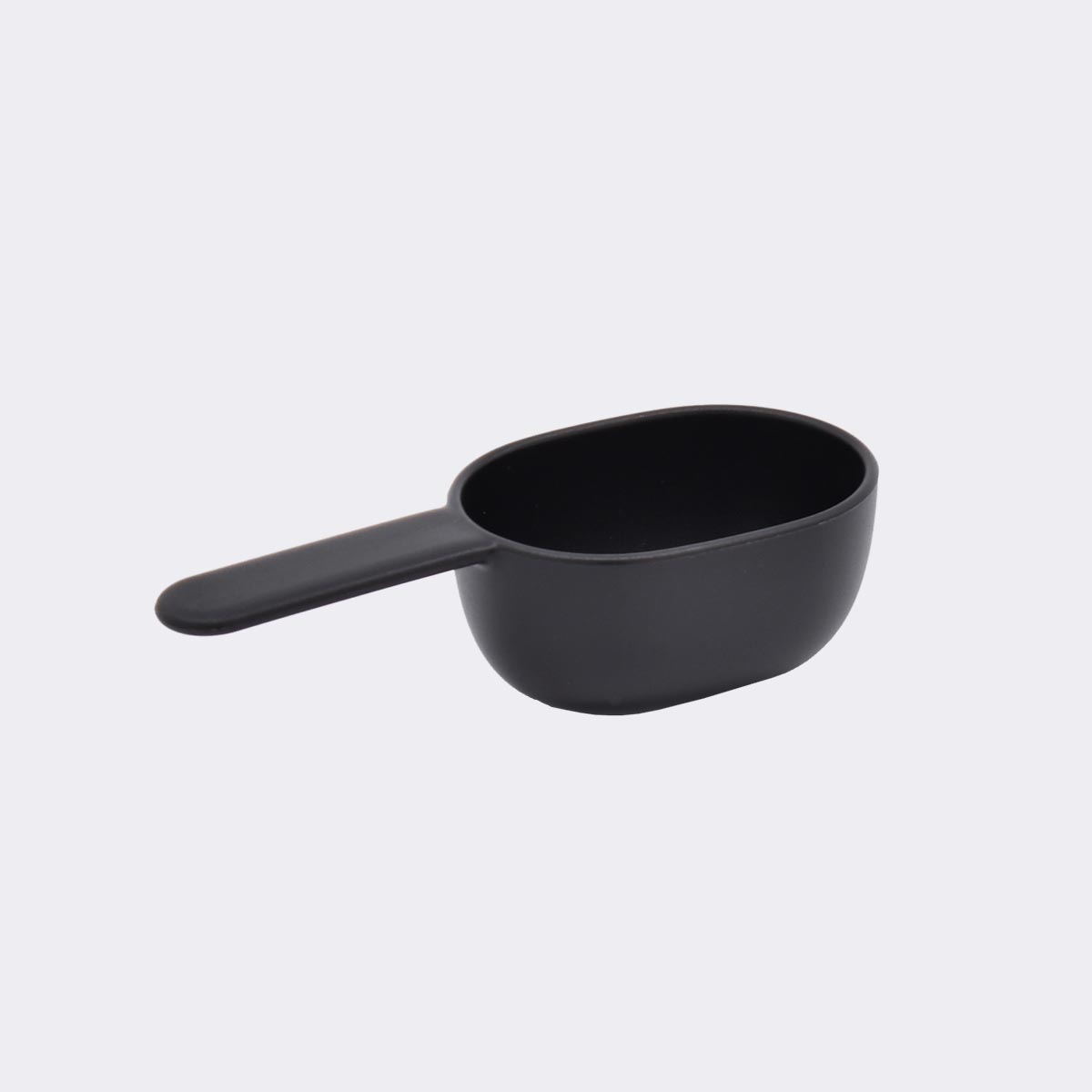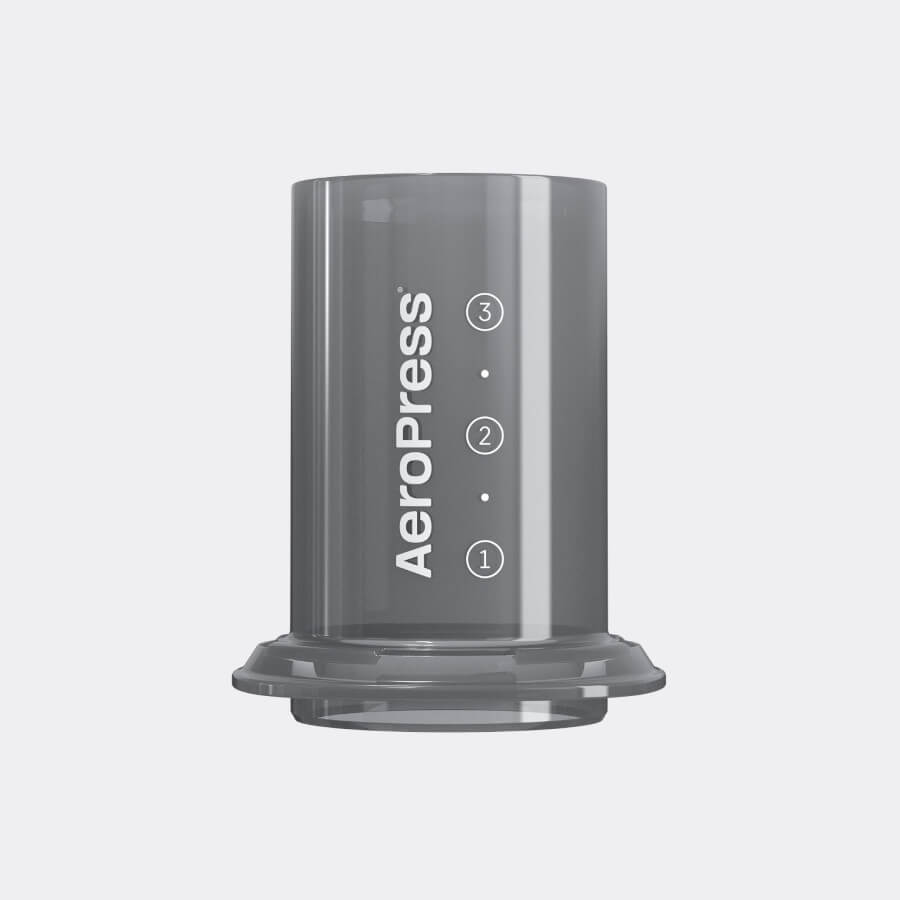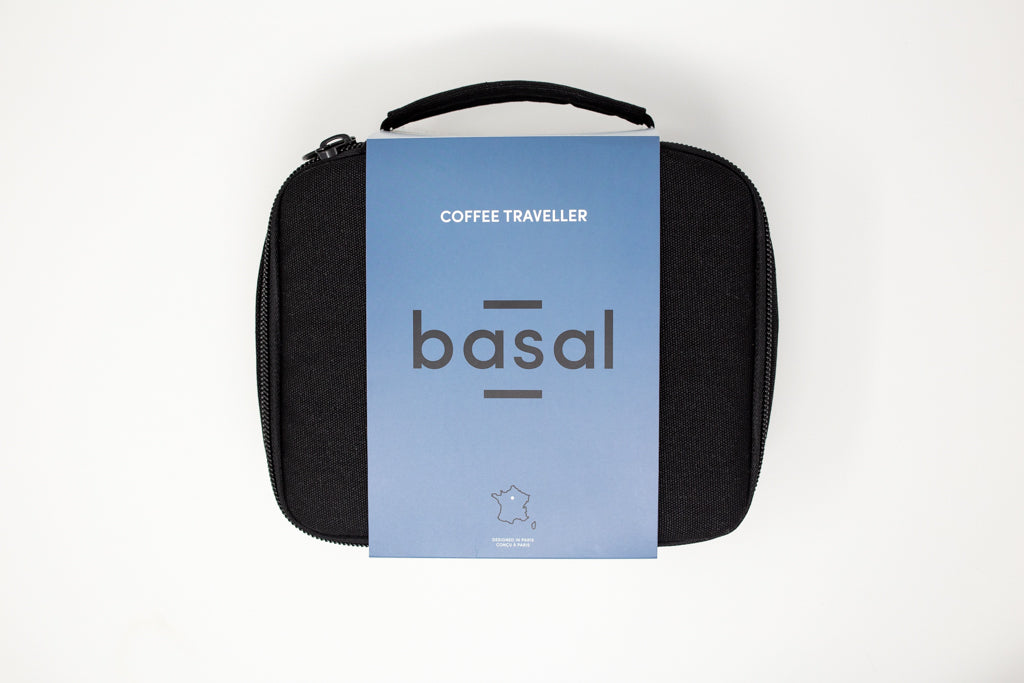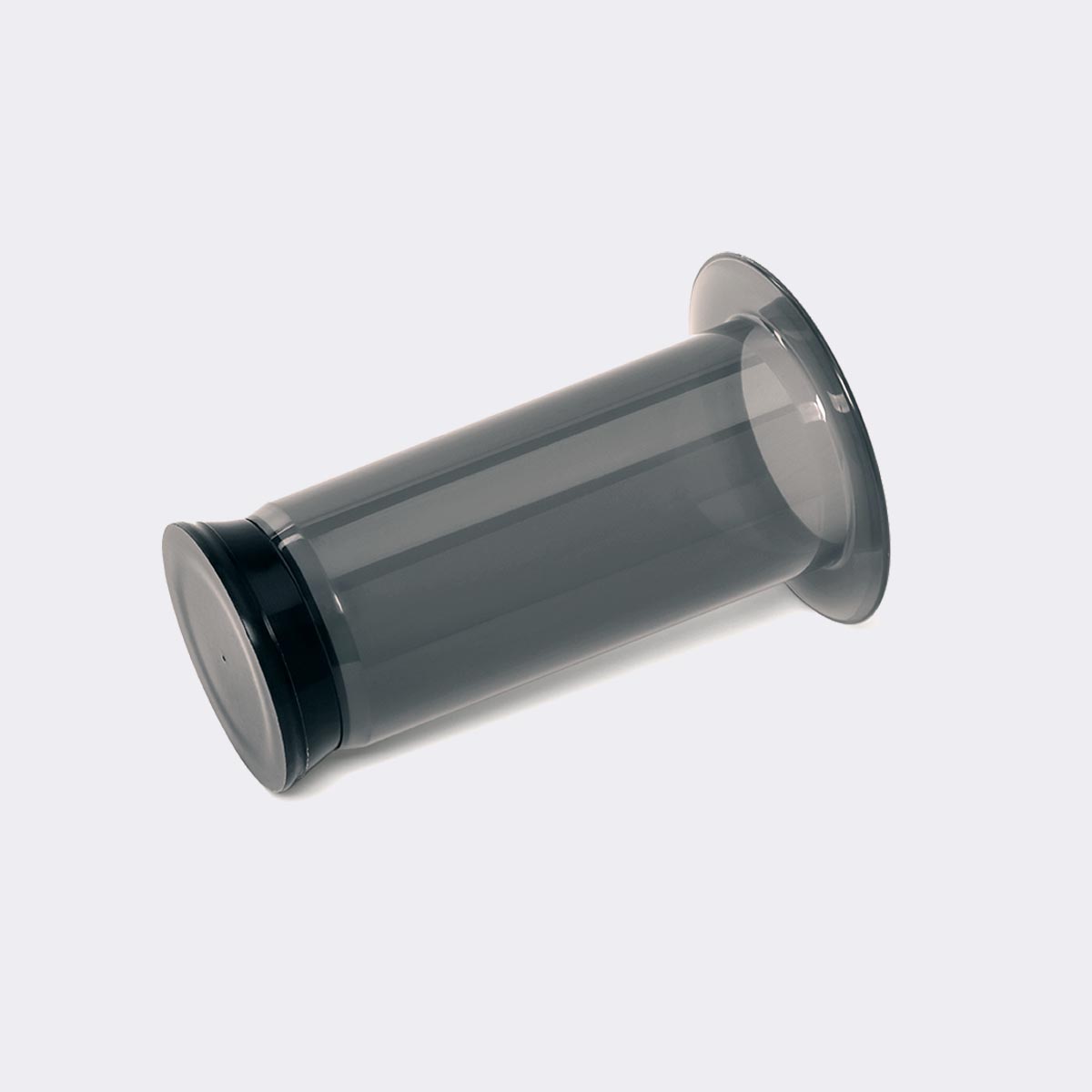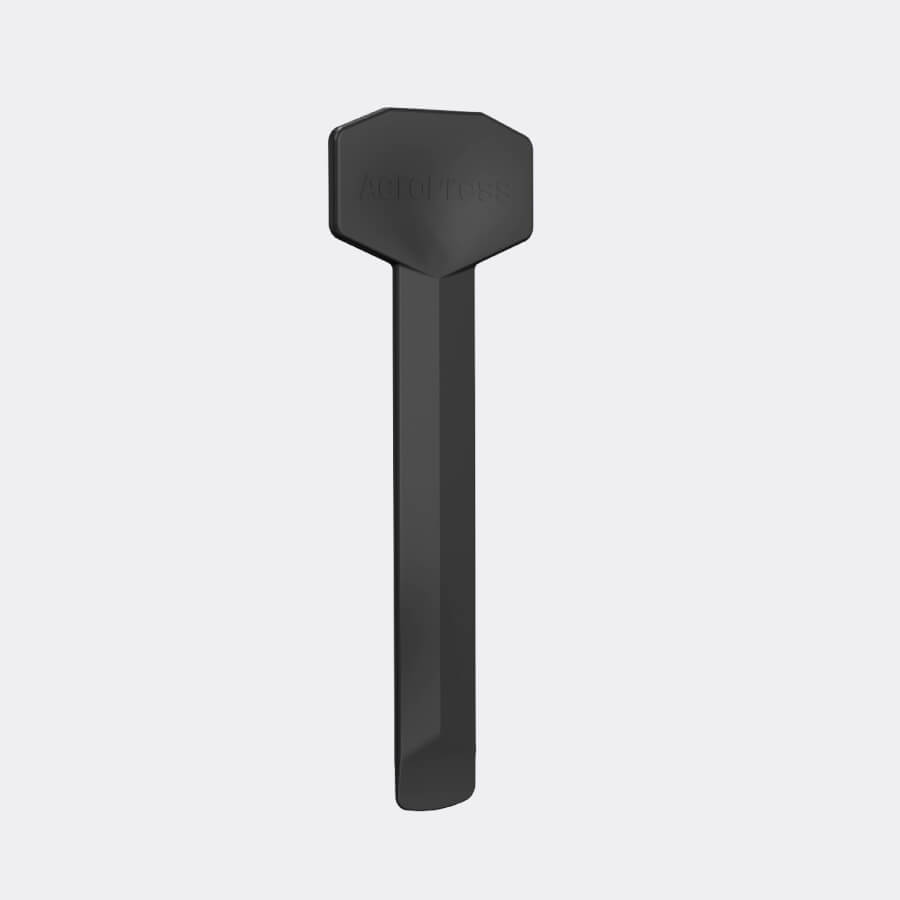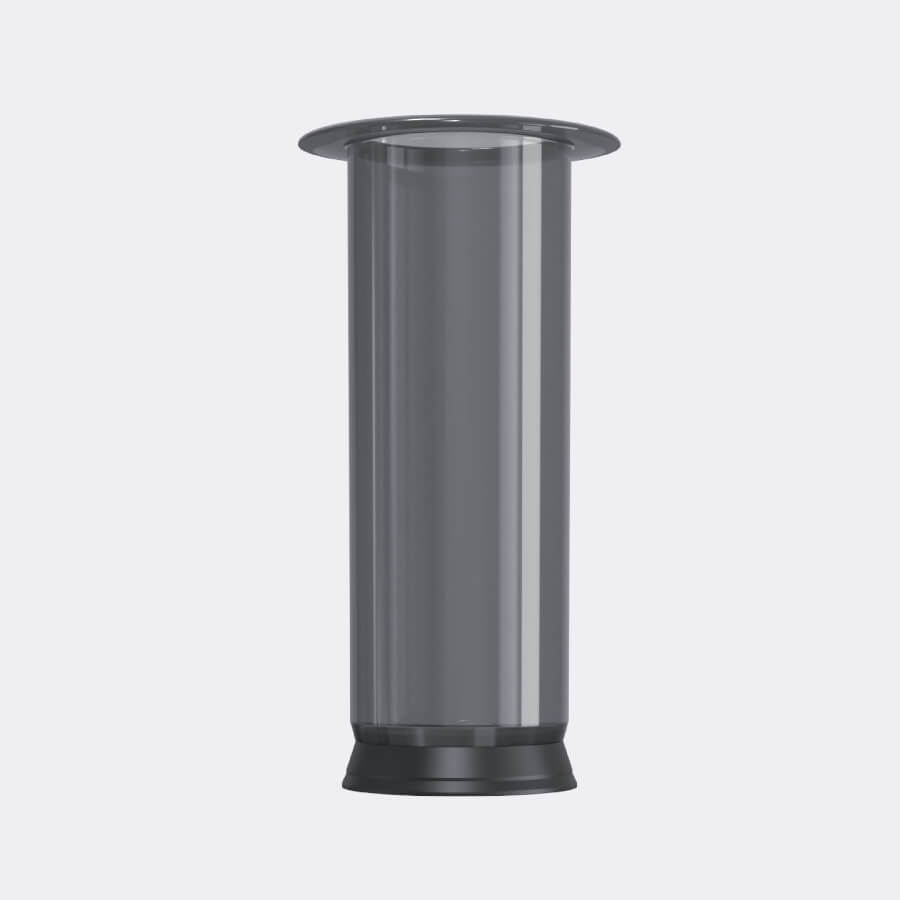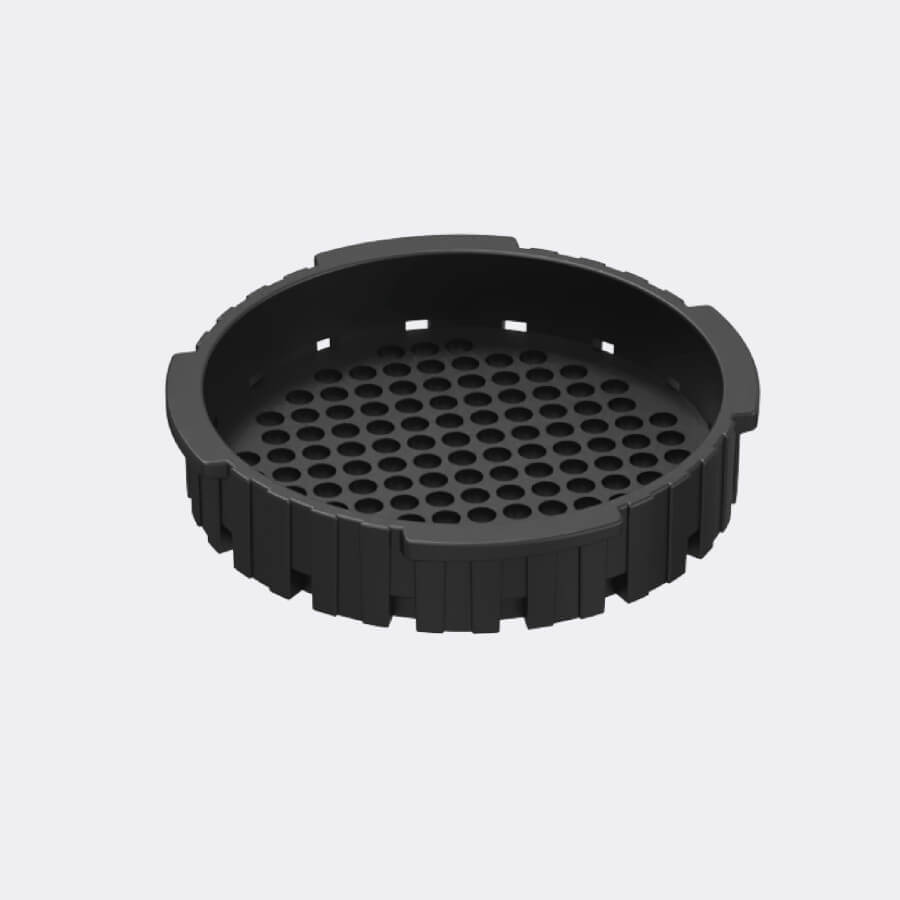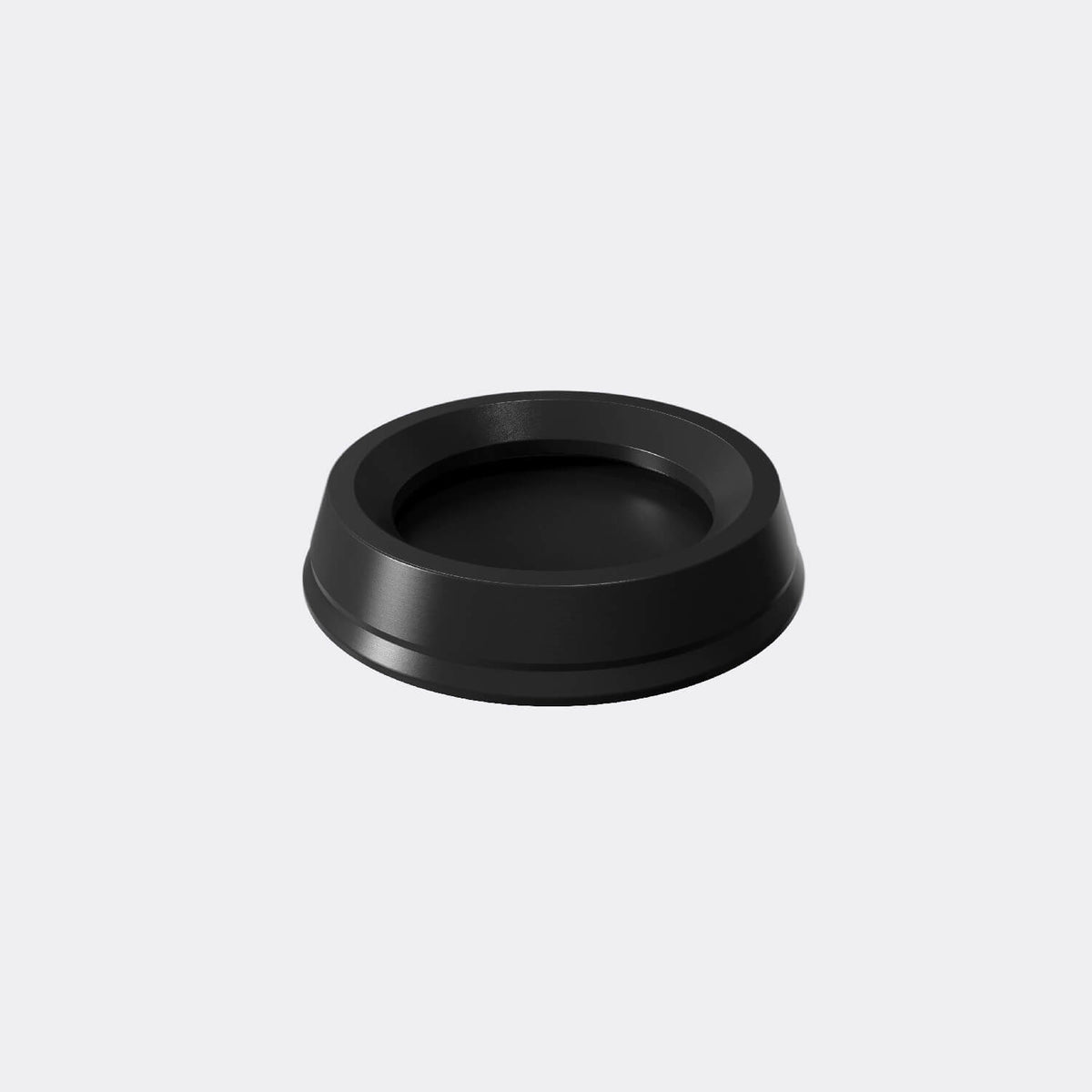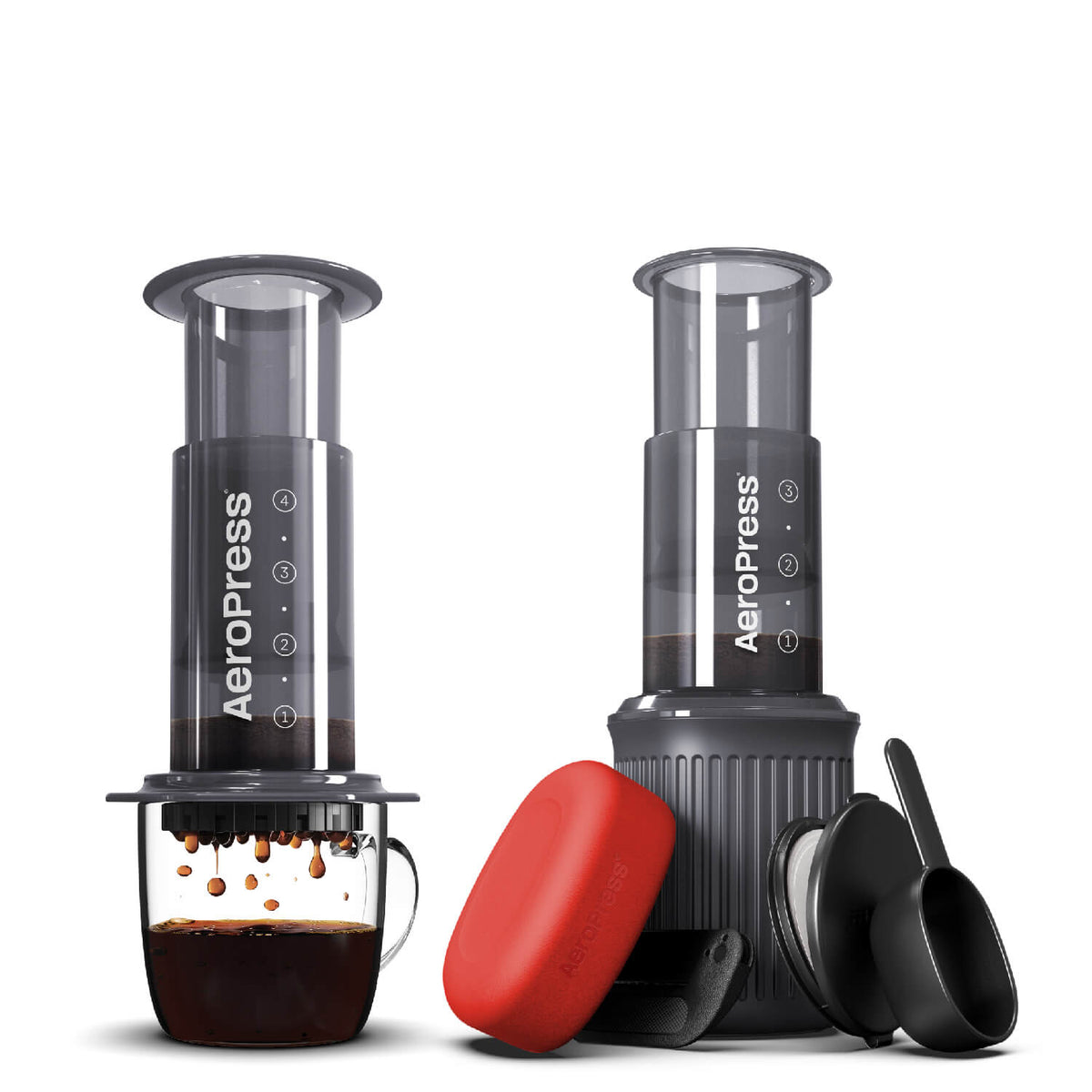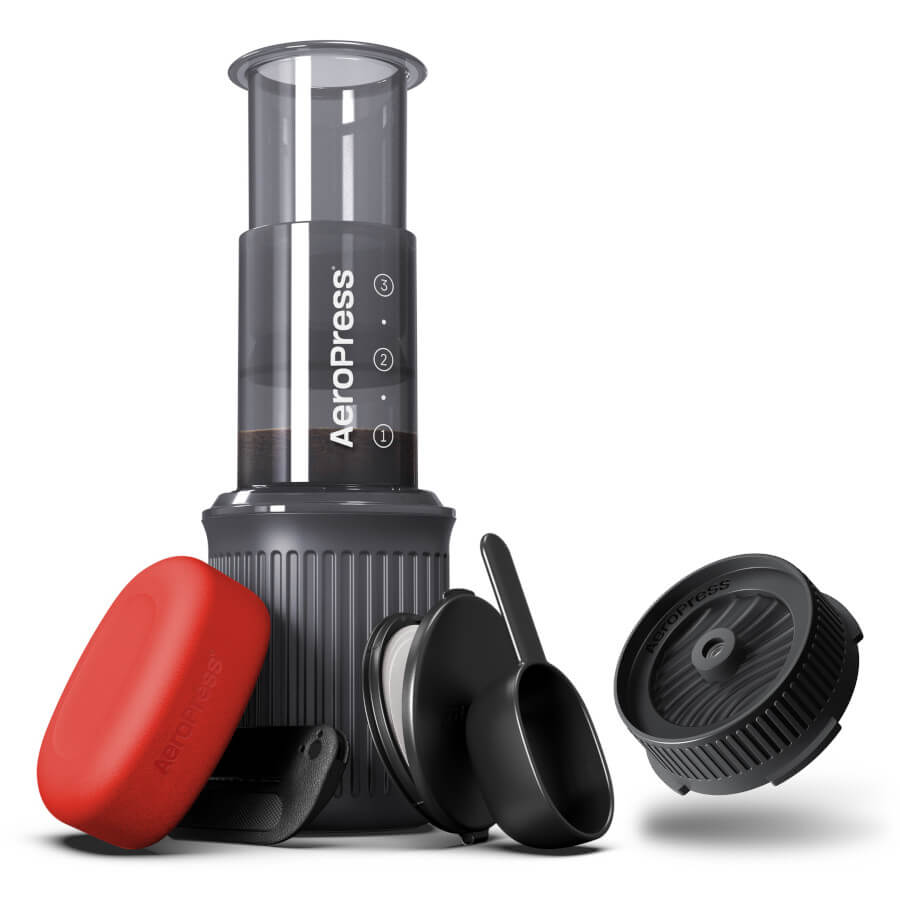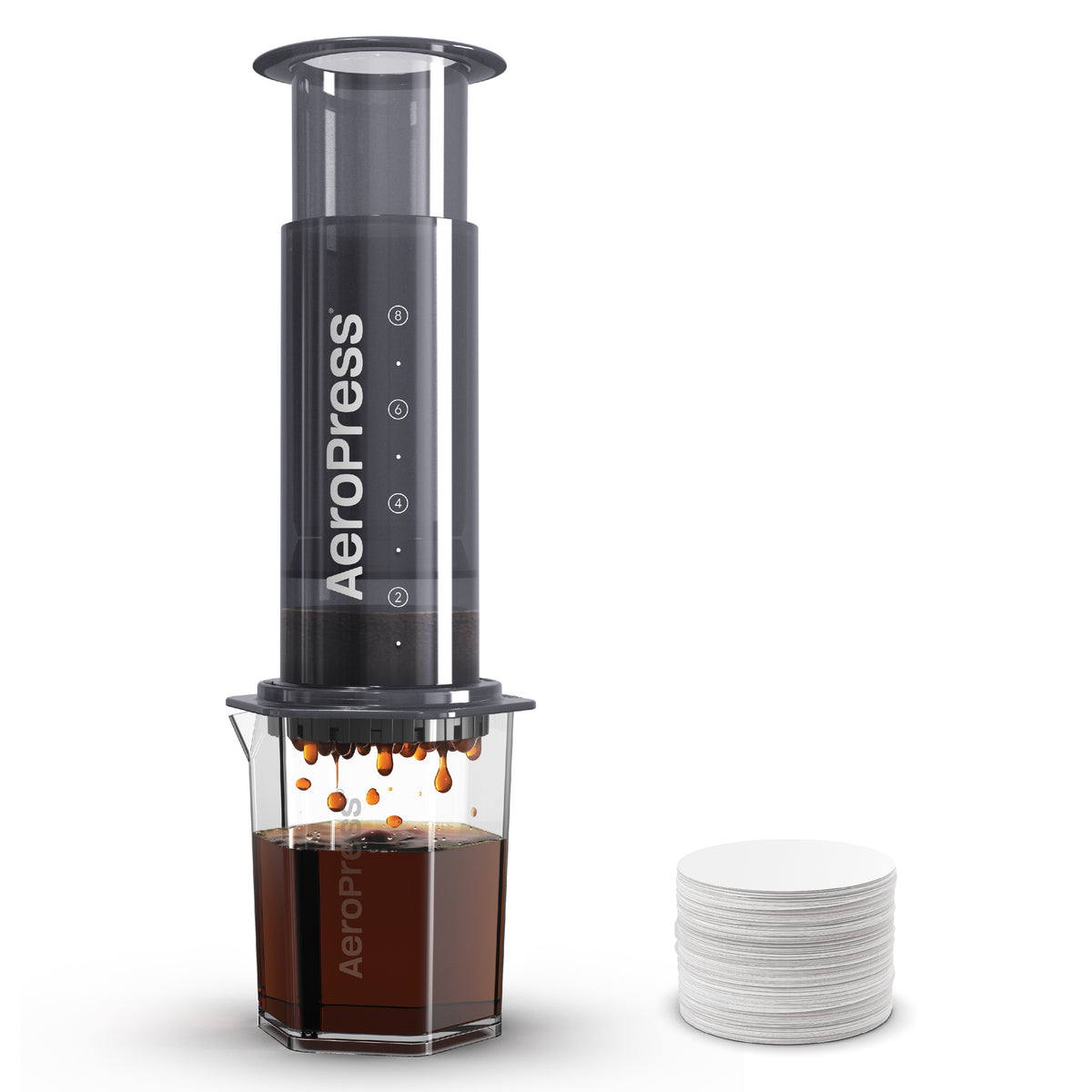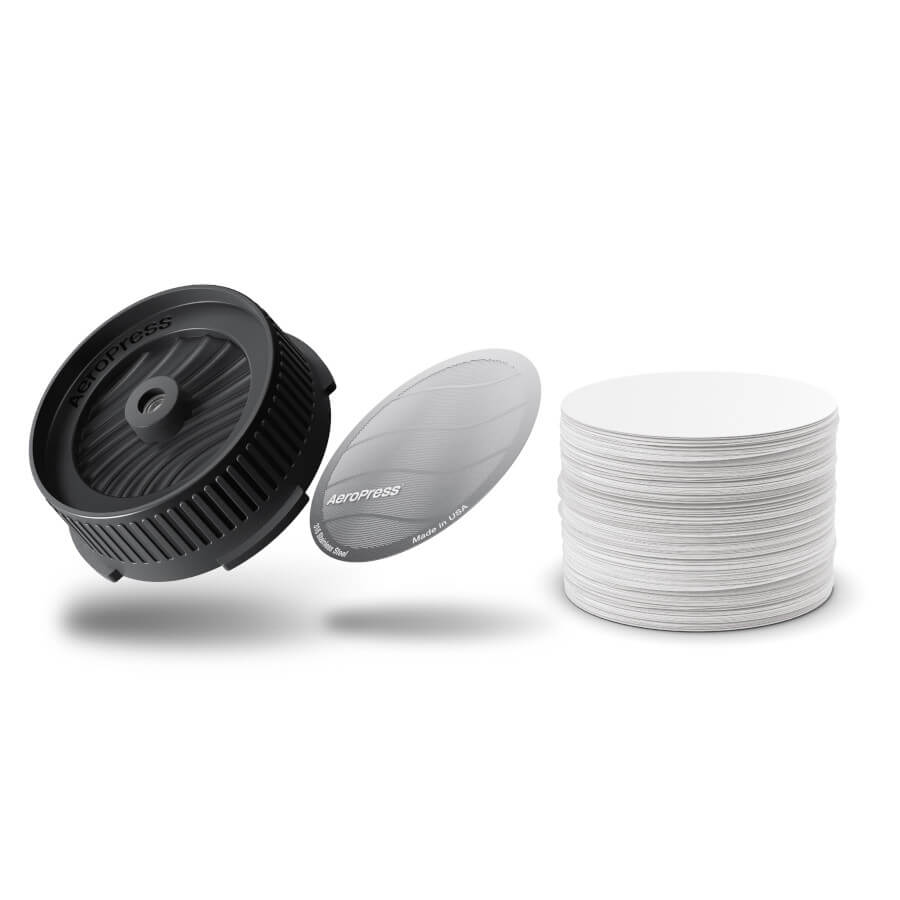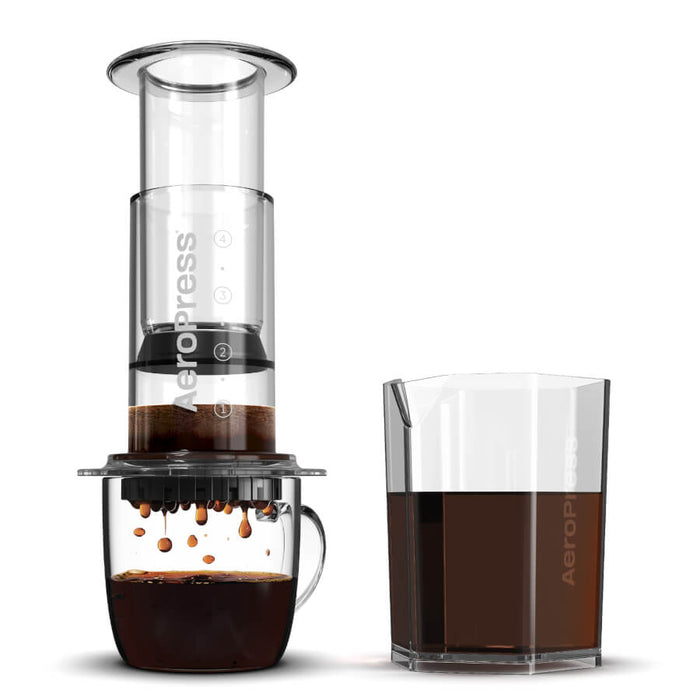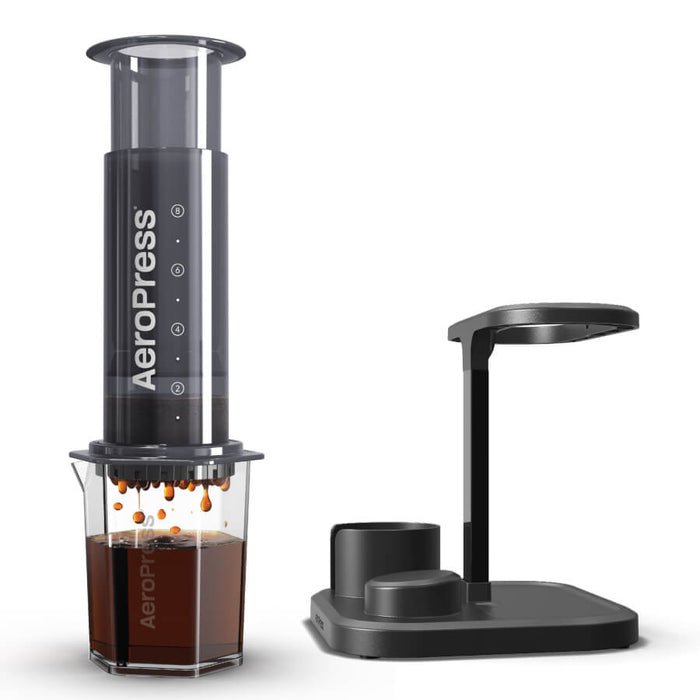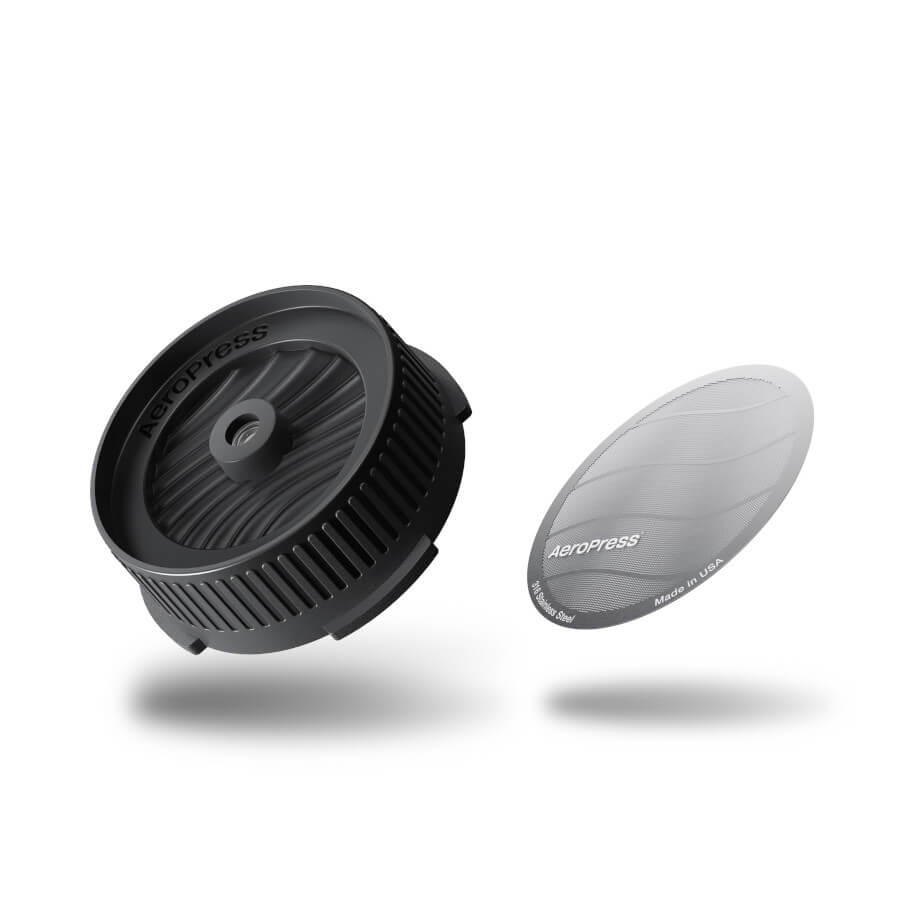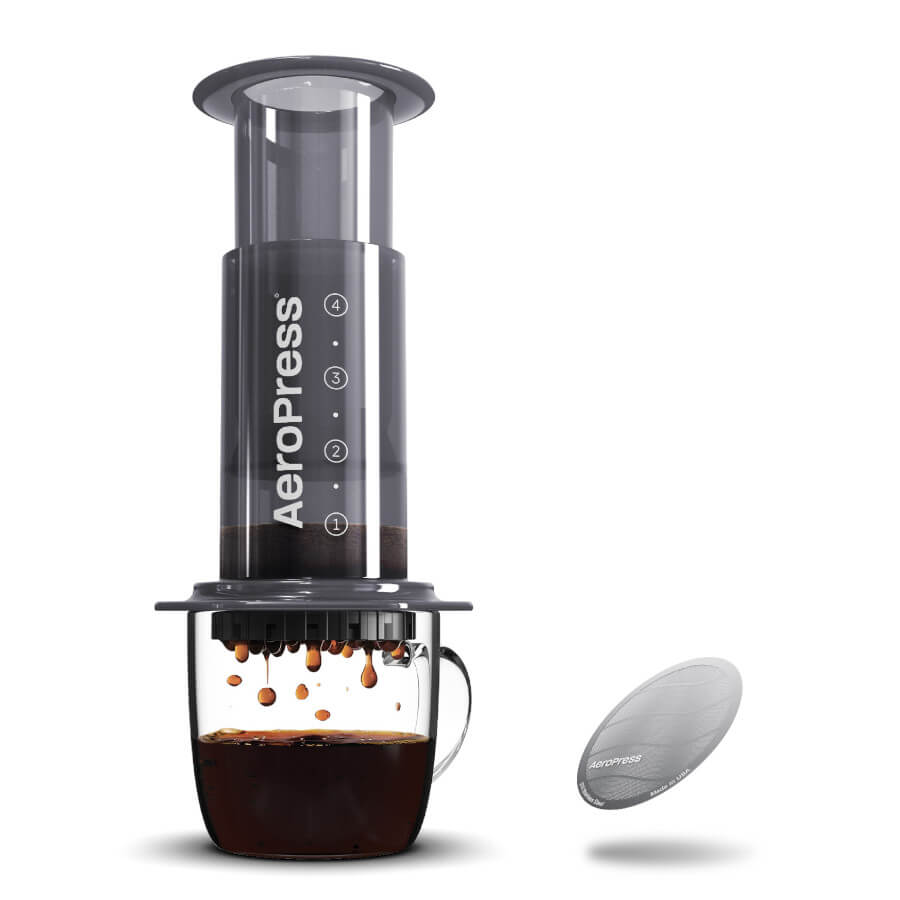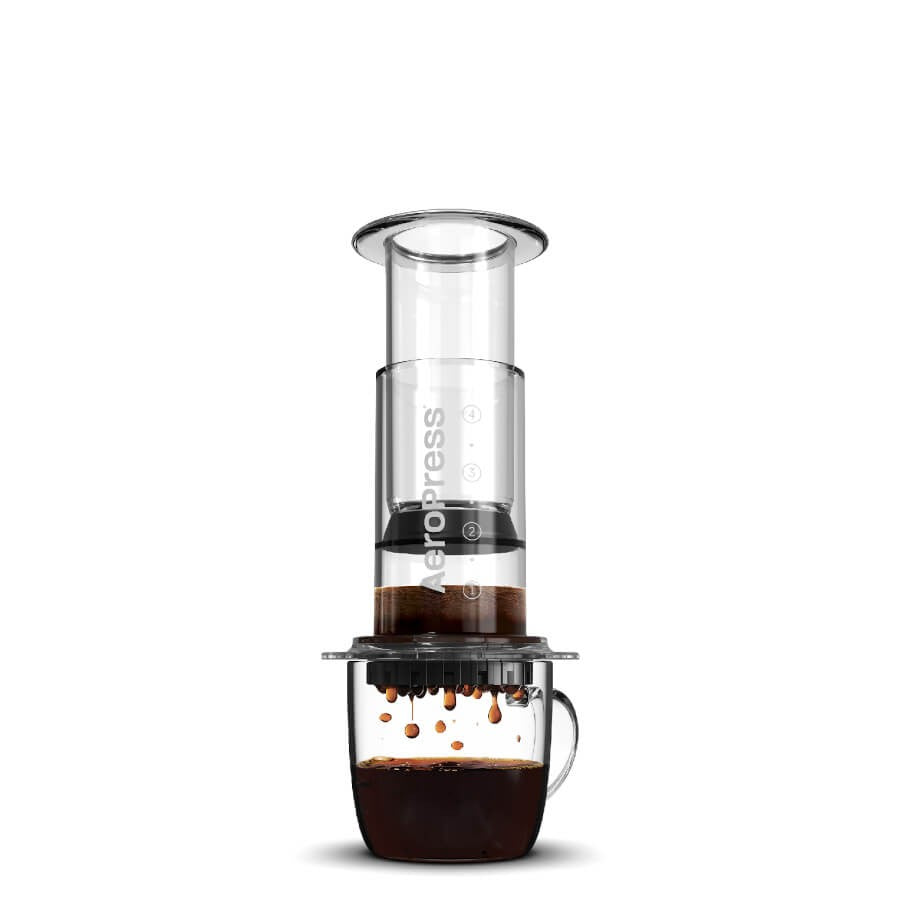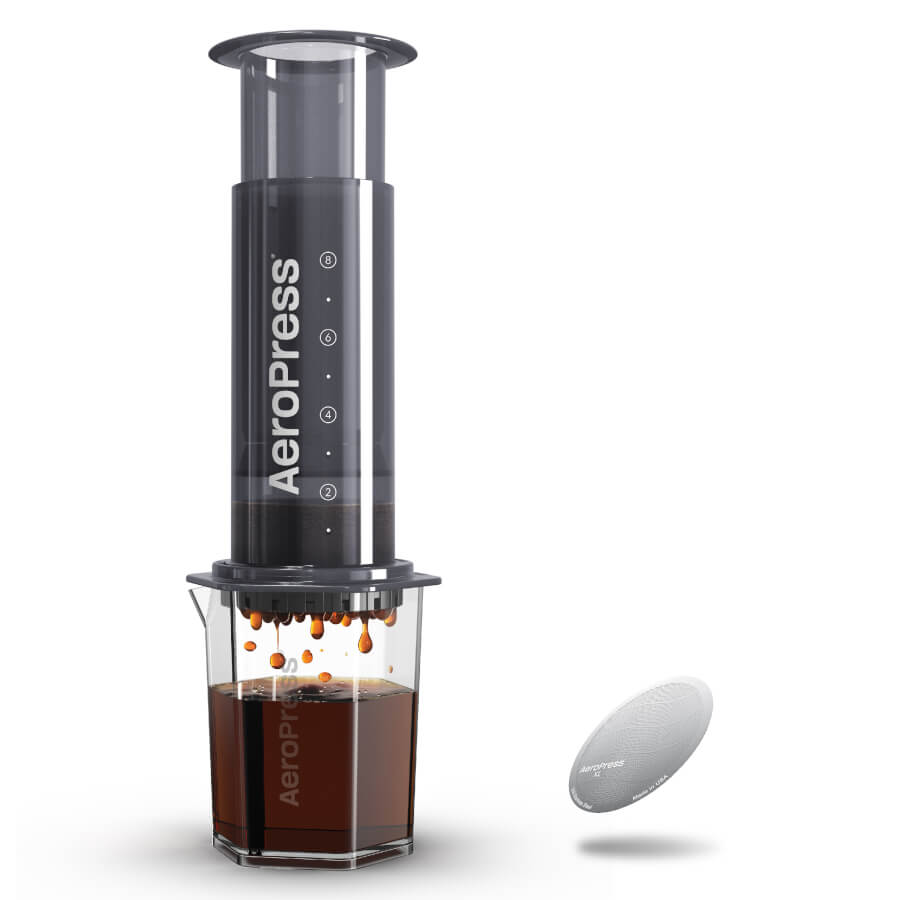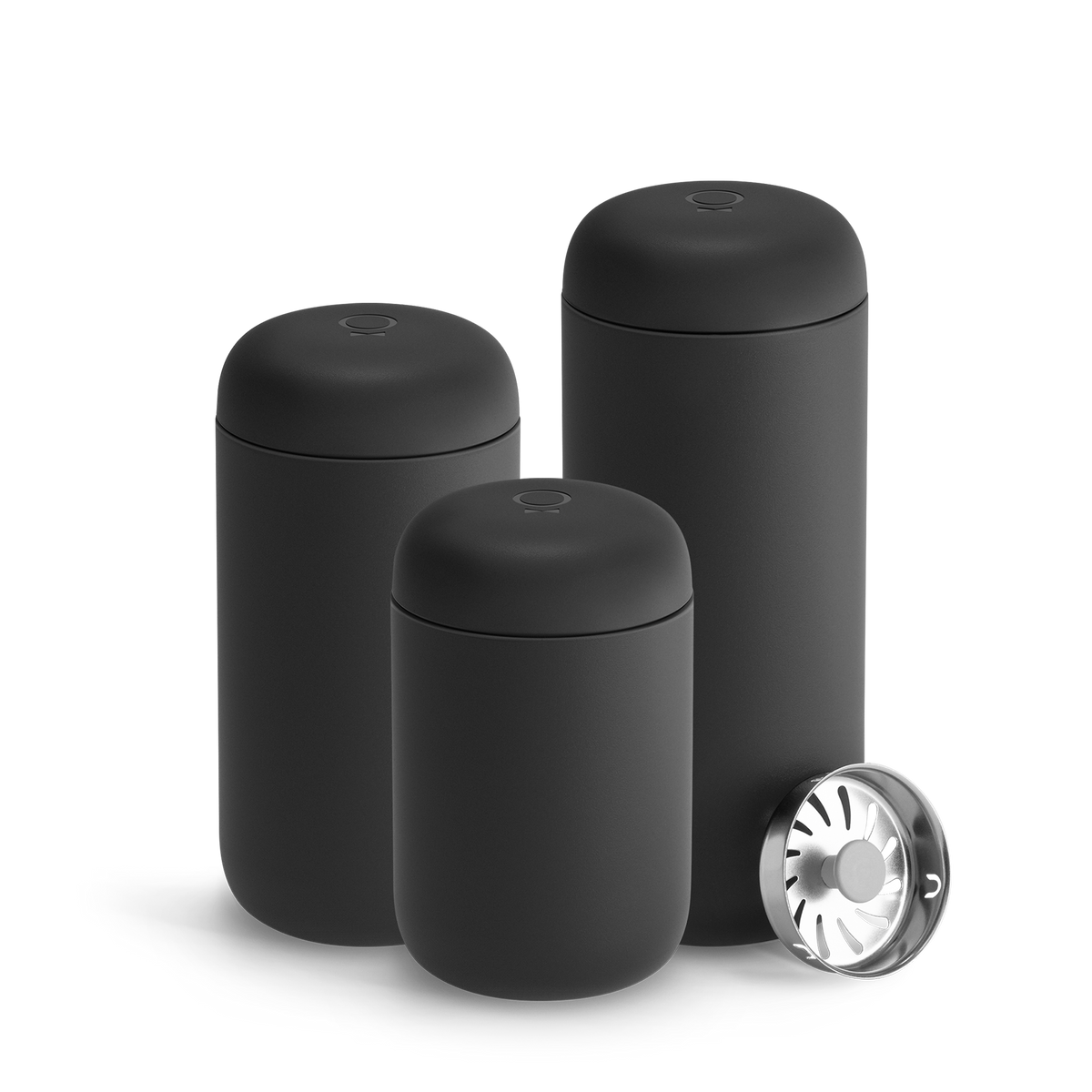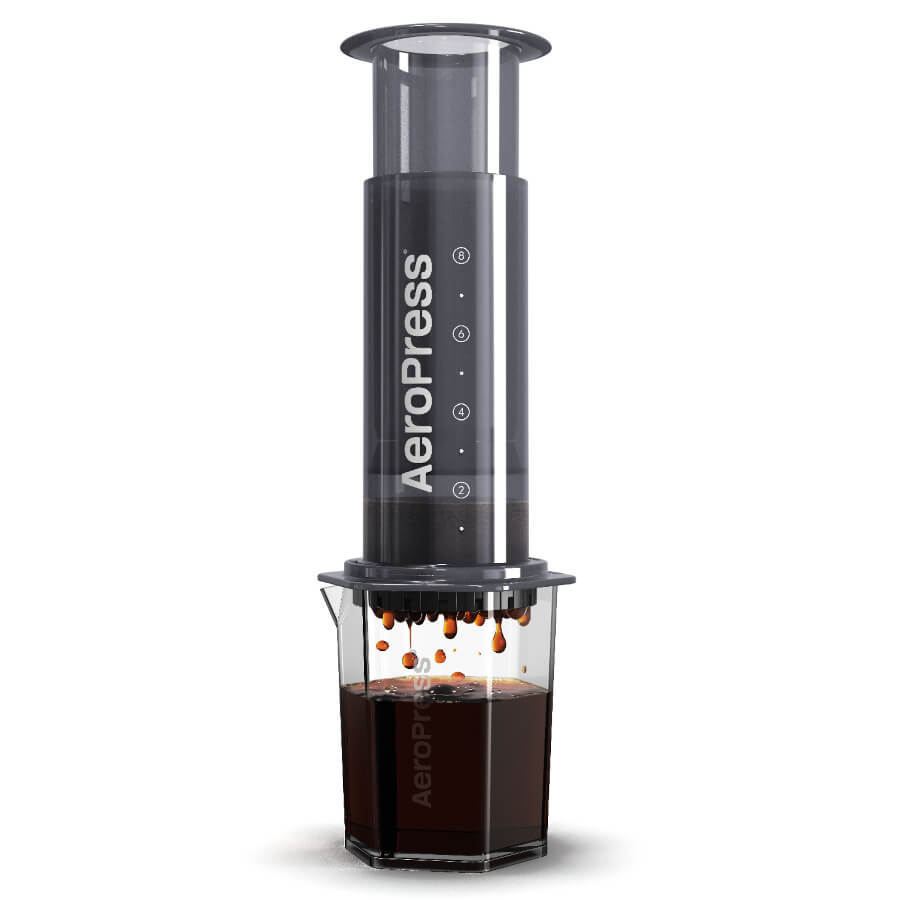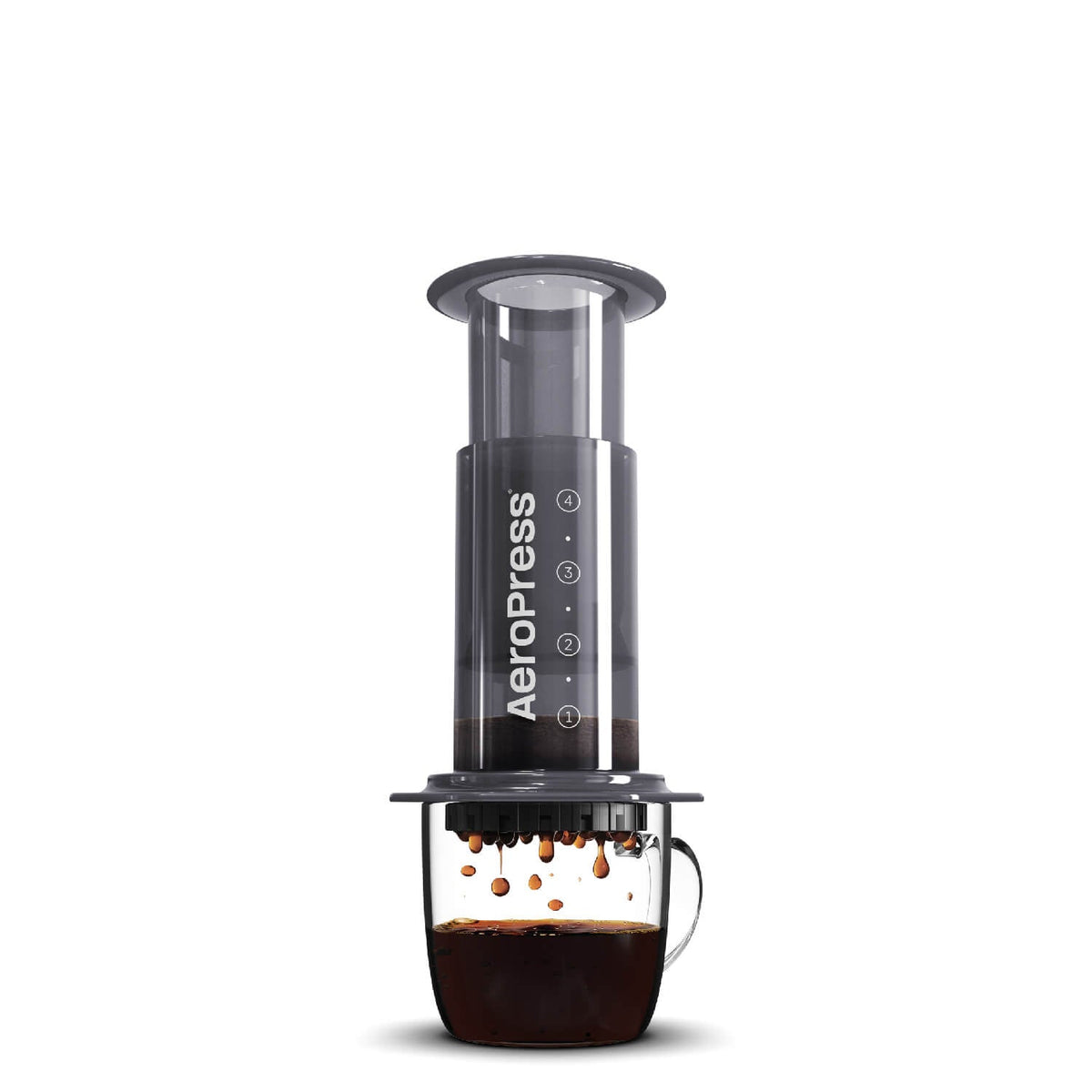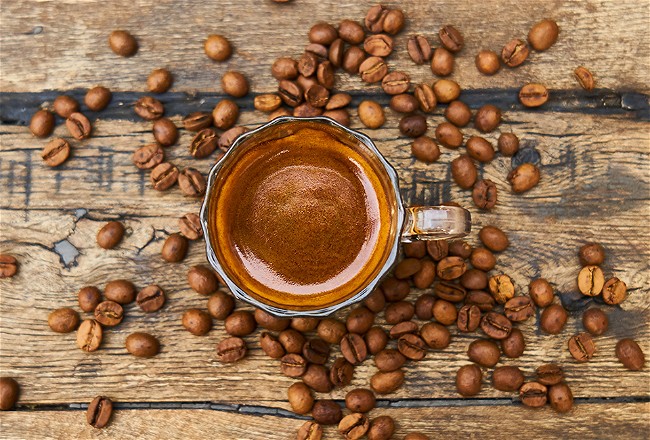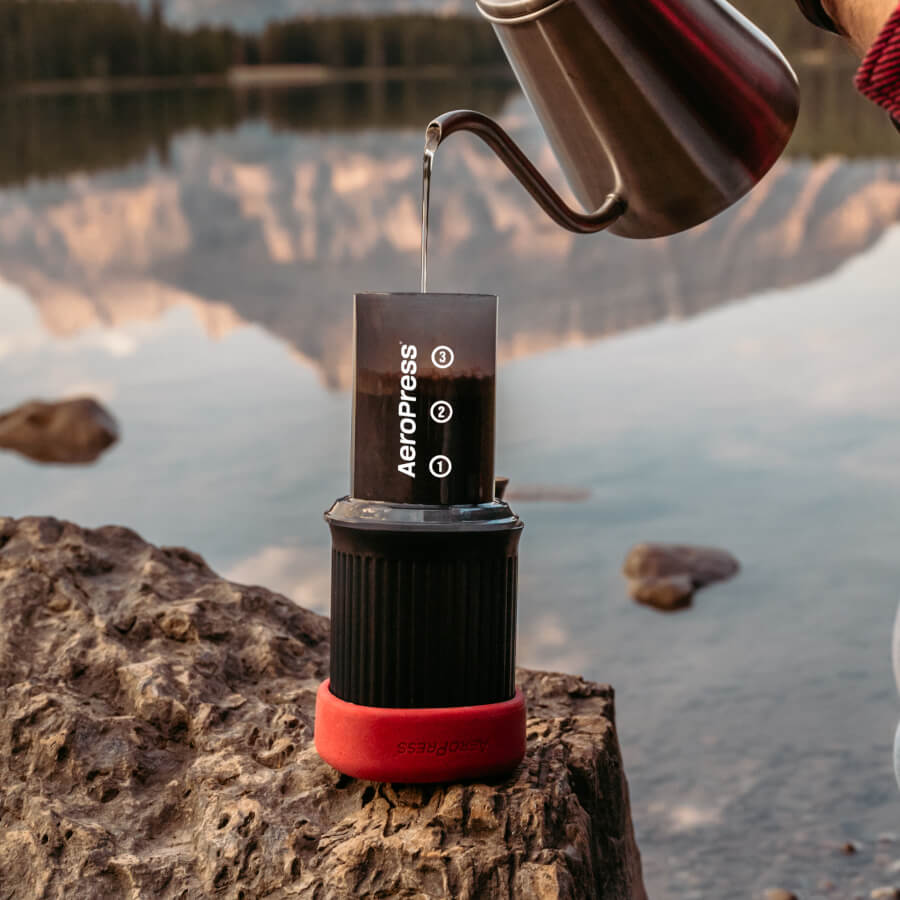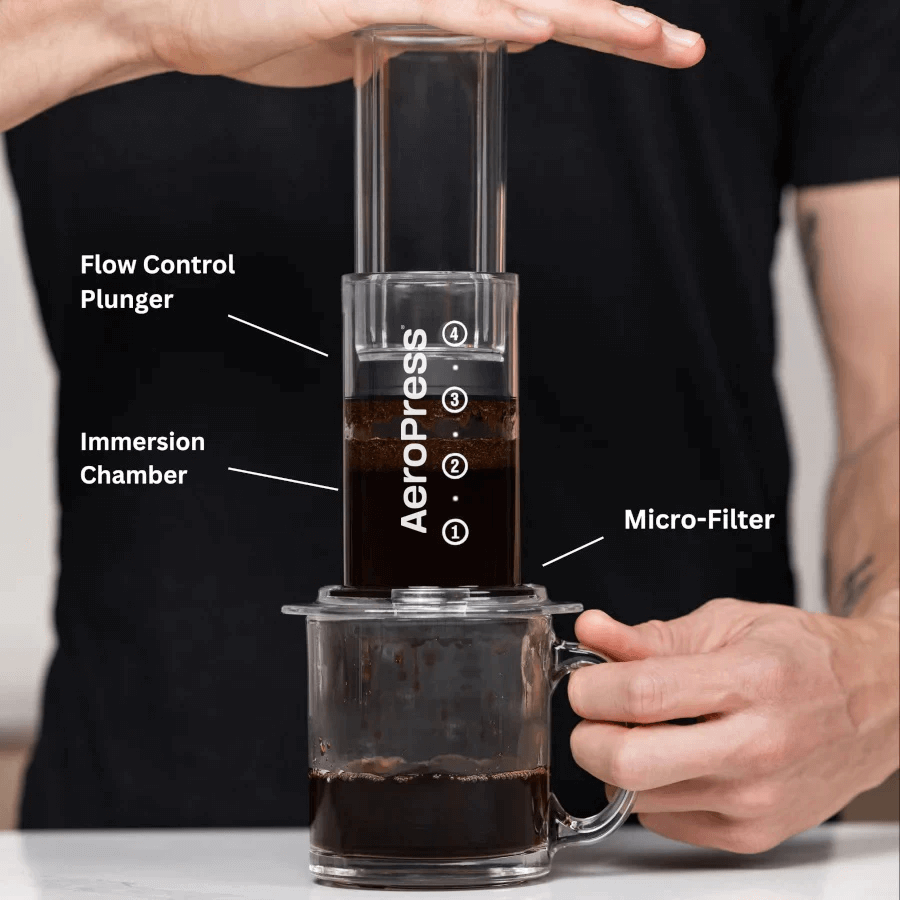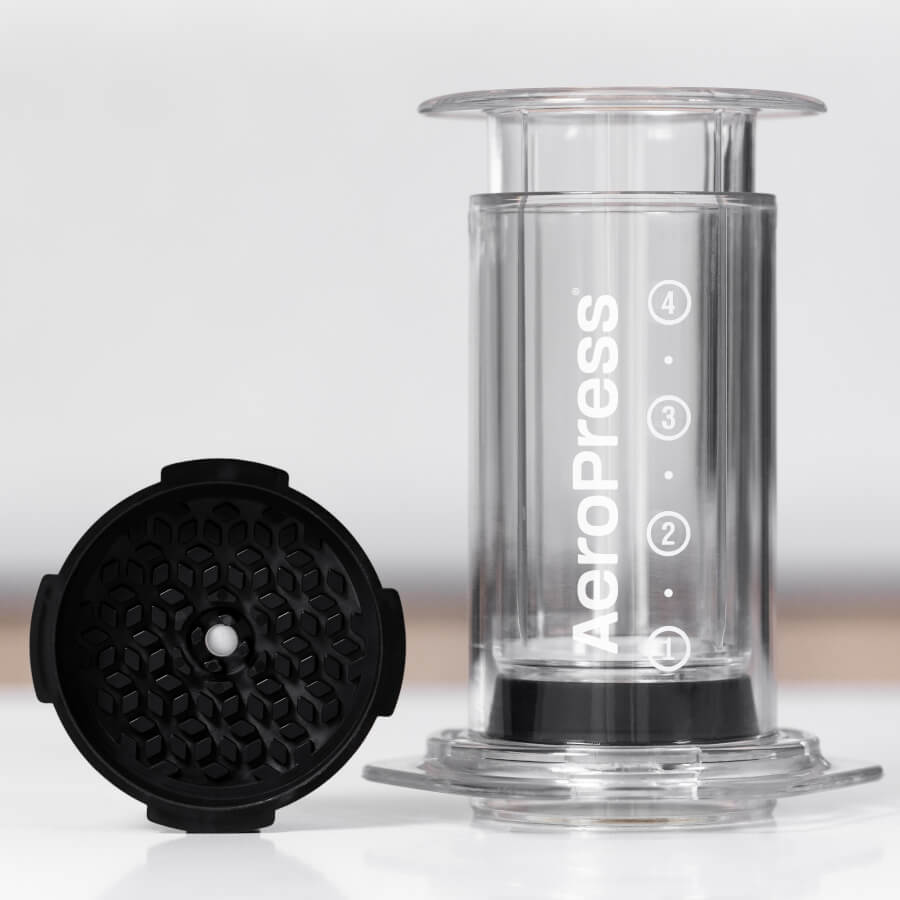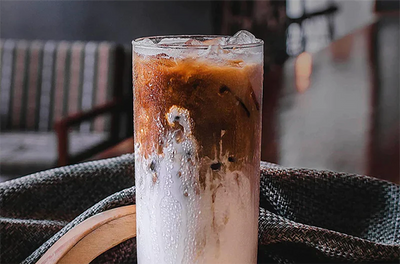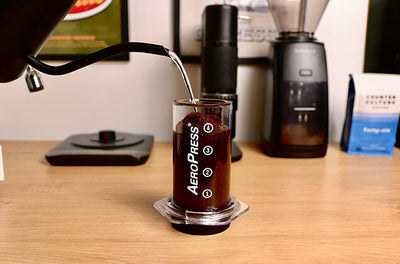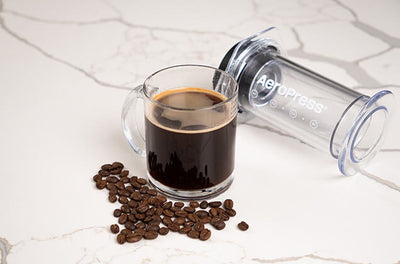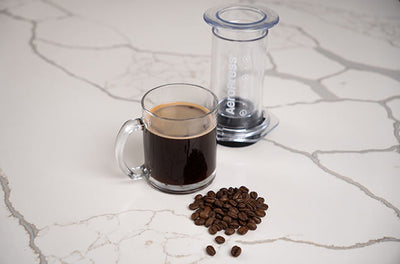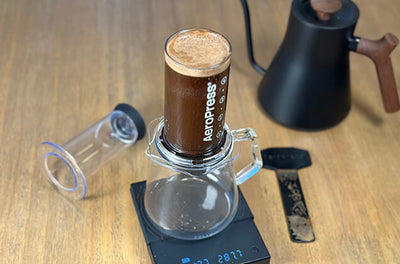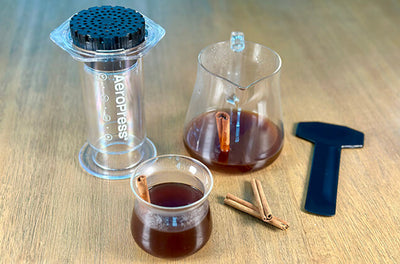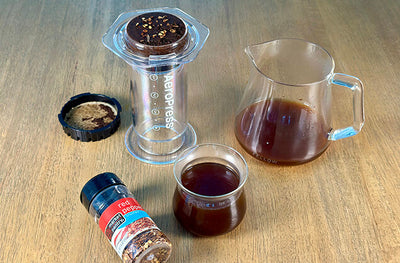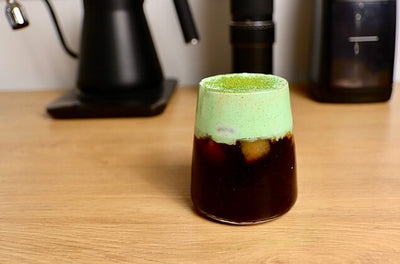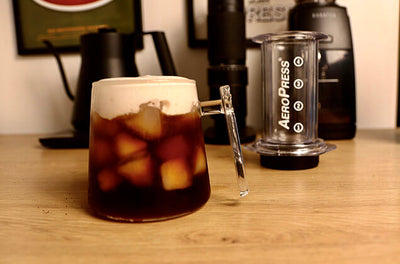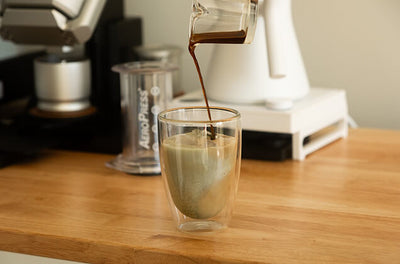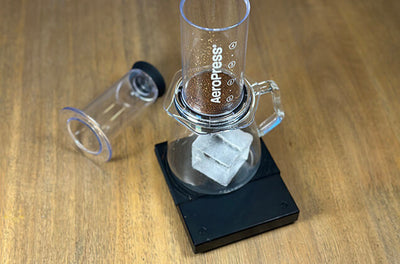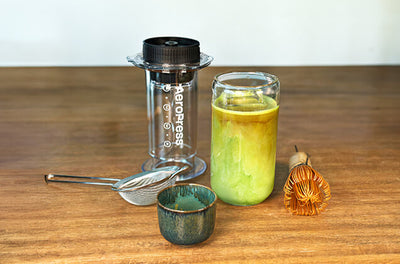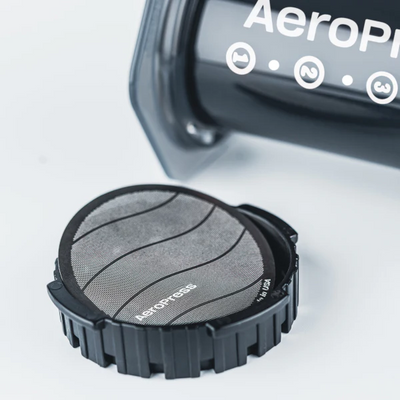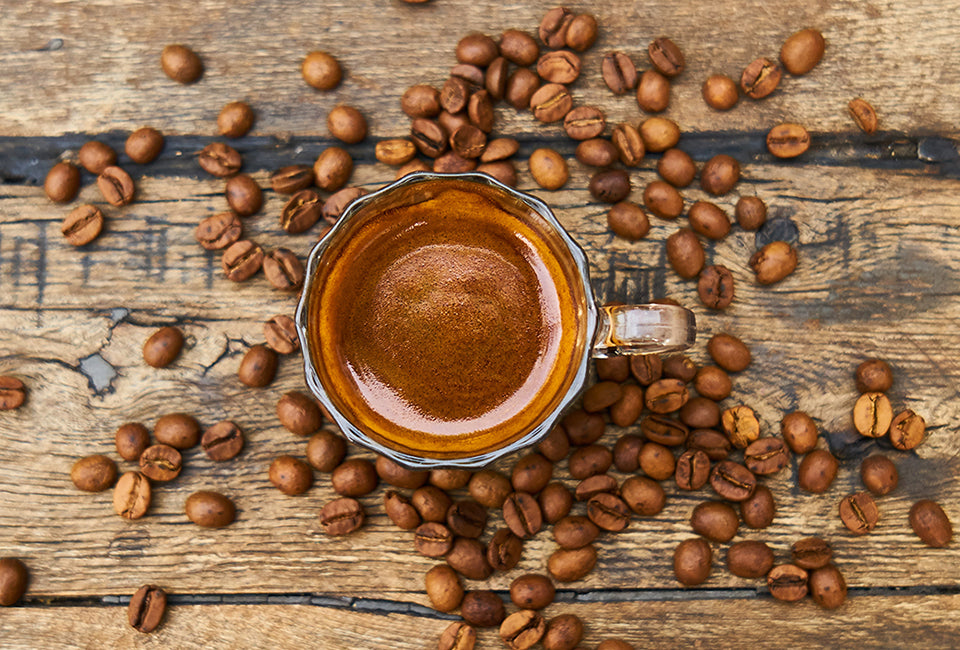
What is a Cafe Cubano?
It goes by many names. The most common are cafecito, cafe cubano, Cuban coffee, and Cuban espresso. No matter what you call it, the cafe cubano is a small, intense and sweet coffee beverage. You don’t need to go to Cuba or Miami to try a cafe cubano. Make one in the comfort of your own kitchen (or in the airport on your way to Miami). Typically it is made using a Moka pot (also known as a stovetop espresso maker).
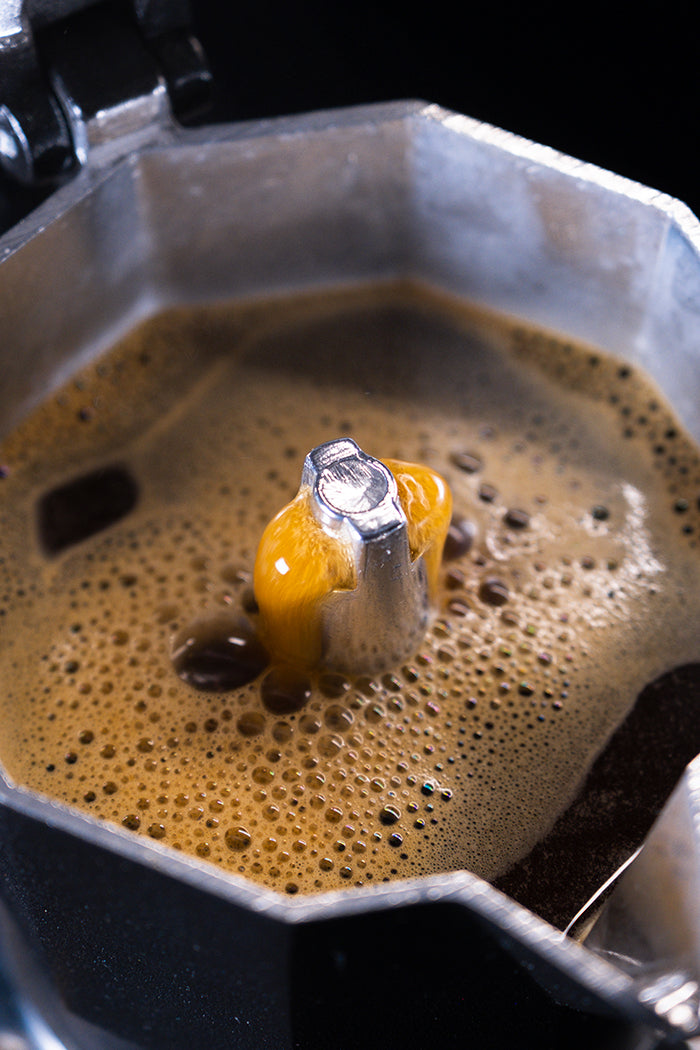
A common misconception is that Cuban espresso is made by putting sugar into the ground coffee and pulling a shot through an espresso machine. While convenient for a barista, this method ends up making a subpar espresso shot and harms the espresso machine. (Please do not ever put sugar in an espresso machine.)

AeroPress vs. Moka Pot
The Moka pot has three chambers. Hot water is placed in the bottom chamber, the middle chamber holds the coffee grounds, and a tube connects the lower two chambers. When placed on a hot stovetop, the water boils and is forced up the tube into the grounds. As the coffee brews, it is pushed through a metal filter and the beverage lands in the upper chamber. The beverage is dense, syrupy and strong, very similar to espresso. Hence the common name “stove top espresso maker”.While AeroPress coffee makers weren’t designed specifically to do what a Moka pot does, their versatile nature does allow you to replicate the thick and syrupy, espresso-esque coffee. But it is much easier with an AeroPress coffee maker. Cleanup is simple, also. After you are done brewing with an AeroPress coffee maker, unscrew the filter cap, pop the grounds into the compost and rinse the AeroPress parts clean.

If you are making several servings, AeroPress coffee makers will be faster. This is partially because the cleanup is so simple, but also because you do not need to bring your water to a complete boil.
How to Make Cuban Coffee with AeroPress Coffee Makers
AeroPress coffee makers can replicate the Moka pot with a few small tweaks in technique, and some upgraded equipment.Prep time: 5 minutes
Total time: 8 minutes
Supplies & Ingredients
- AeroPress Original, AeroPress Go, or AeroPress Clear coffee maker
- AeroPress Flow Control Filter Cap
- AeroPress paper and stainless steel filters
- 2 sturdy coffee mugs or mason jars
- Dinner fork
- Brown sugar
- Fresh dark roasted coffee (whole bean is preferred if you have a grinder)
- Fresh, clean water
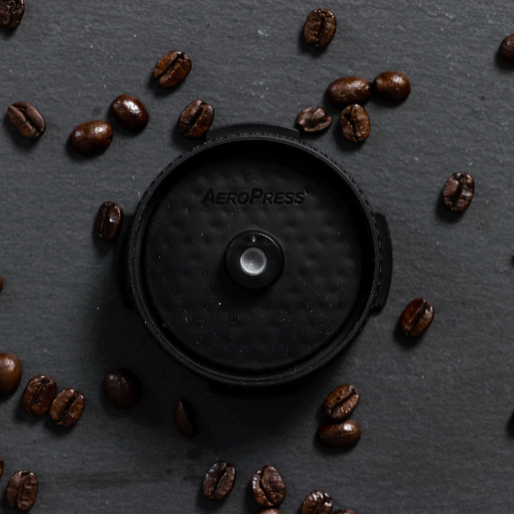

Normally we would use a medium-fine grind for the AeroPress coffee maker. To make Cuban espresso drinks, the coffee should be a little more finely ground, but not quite as fine as espresso (definitely not a powder as you would for Turkish coffee). With this setup you will be able to get the crema some coffee particles, oils, and coffee carbohydrates pass into the beverage, yielding a thicker bodied, syrupy brew.
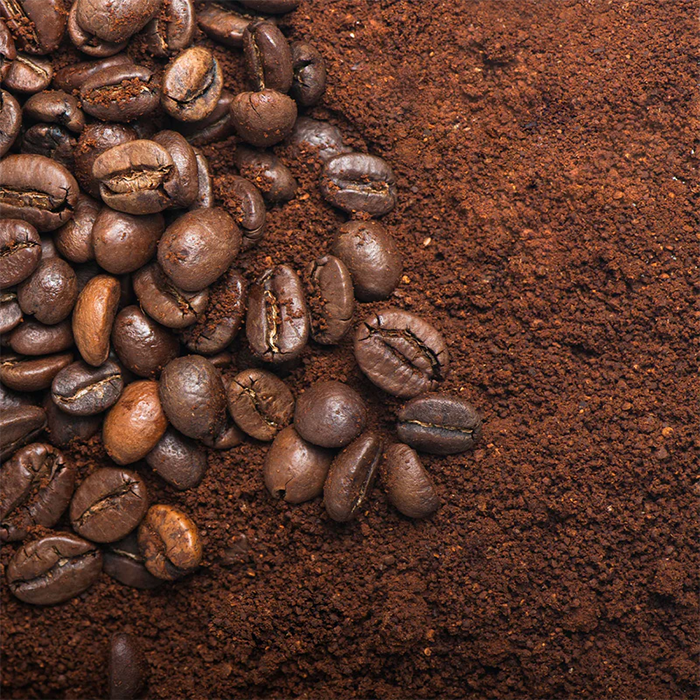
Instructions
Add 2 tablespoons of sugar to one of your mugs.Use the AeroPress Flow Control Filter Cap and the traditional method for cafe Cubano. You can use the AeroPress Original, the AeroPress Clear, or the AeroPress Go. Using the AeroPress Flow Control Filter Cap lets you brew with the control of the inverted method without risking a blowout.
Place the paper filter into the AeroPress Flow Control Filter Cap, then the stainless steel filter. Screw the AeroPress Flow Control Filter Cap onto the chamber and place the device on top of the sugared mug.
Add 25 grams of finely ground dark roasted coffee beans. (If you don’t have a coffee scale, use 4 or 5 generous tablespoons.)
Stir in 90 grams (3 fl oz) of hot water (185℉ / 85℃ is recommended for dark roasts).
After 20 seconds, gently swirl the AeroPress coffee maker, insert the plunger, and press with a steady, slow pressure. Press completely through the hiss until you compact the puck of grounds.
Immediately and gently pull the plunger back out of the brew chamber. Stir in another 120 grams (4 fl oz) hot water, insert plunger as before and after 30 seconds press into the second mug. Yes, this double-brewing of the grounds is an unconventional method. If you are uncomfortable doing this, feel free to grind up another batch of grounds and brew a separate serving.
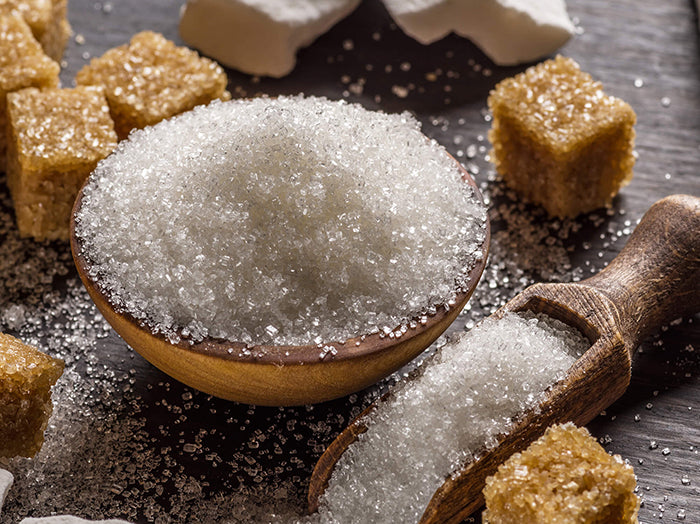
© volff, 123RF Free Images
While you wait for the second batch of the beverage to brew, start to vigorously mix the sugar and the coffee with the fork. This is the espumita. We want it to be frothy and thick with a light caramel color. If it is not thickening, feel free to add more sugar. If you do not want to add more sugar, on your next attempt reduce the amount of water or increase the amount of coffee used in the first brew. It will take you a little trial and error to perfect your own technique to create your own favorite Cuban coffee recipe.
When the second half of the brew is finished, spoon the espumita on top of the coffee and enjoy!
Classically, the cafe cubano is served in a small cup. If you have traditional espresso cups (demitasse cups), this recipe can be split between two or three cups using a measuring cup, and then shared with a friend.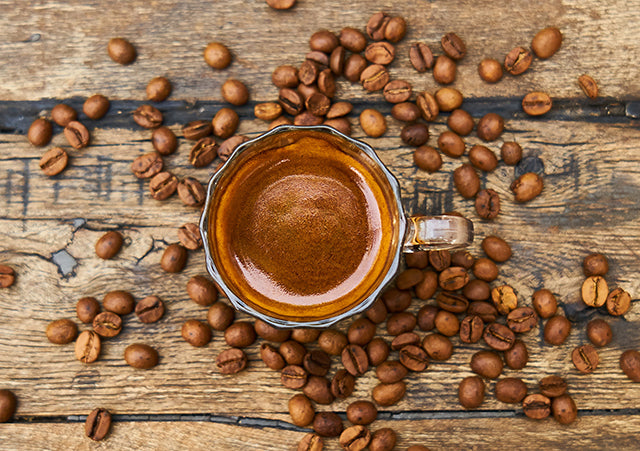
Variations
The traditional Cuban recipe uses white sugar. I like the rich flavor of brown sugar. I feel it compliments the smokiness and low acid profile of the dark roasted coffee.
Substitute sweetened condensed milk to make more of a café con leche.
Make a cortadito out of your Cuban coffee with milk. Add an ounce of steamed milk, or milk heated and frothed on the stove top. It is essentially a small, sweet latte.
If you like iced coffee, try this with the Japanese coffee method. Press onto a couple of cubes of ice. Cut your hot water down by 30 grams (1 fl oz). All the other instructions remain the same.
Use a decaf coffee. Don’t be afraid of decaf.






